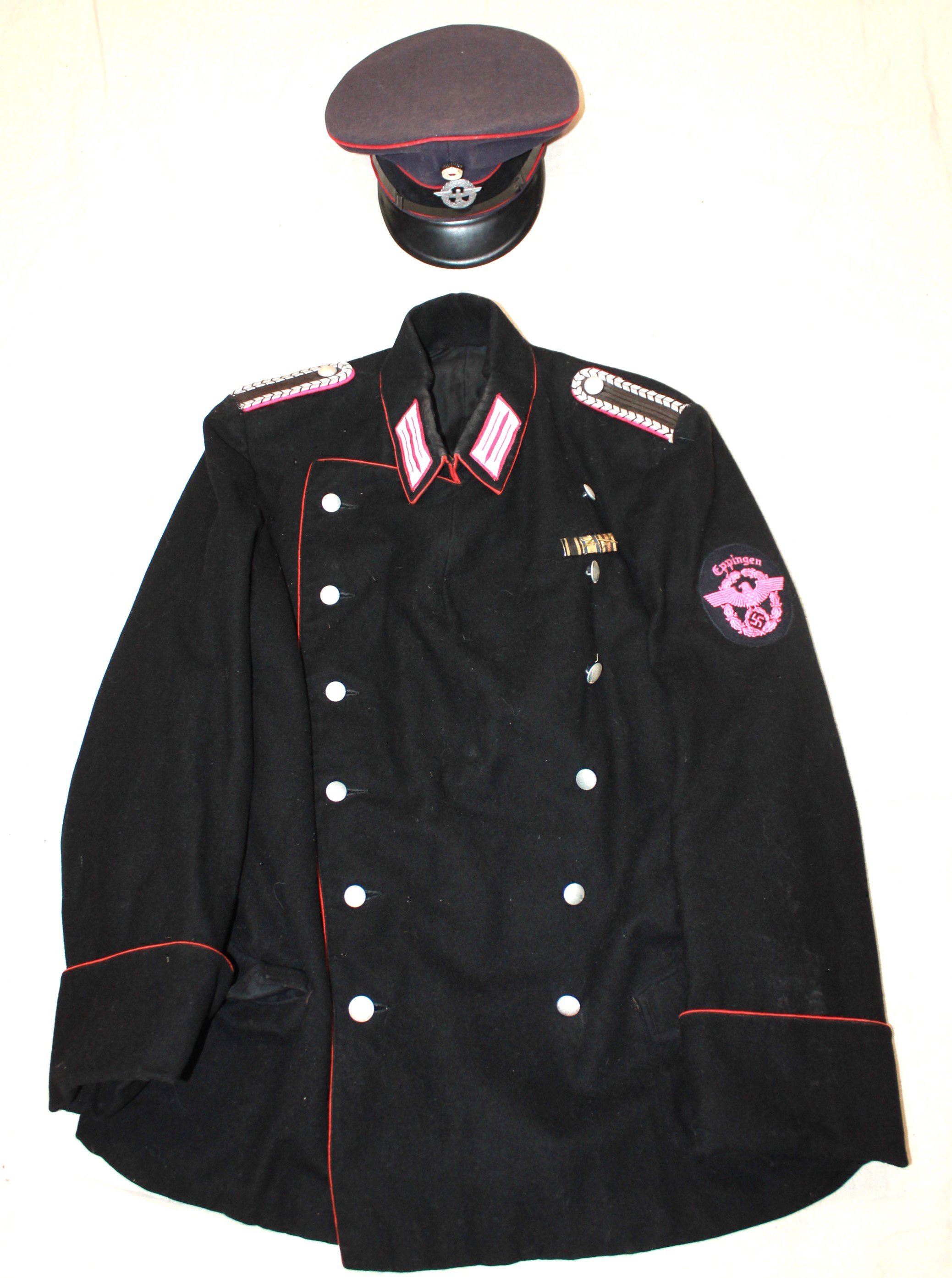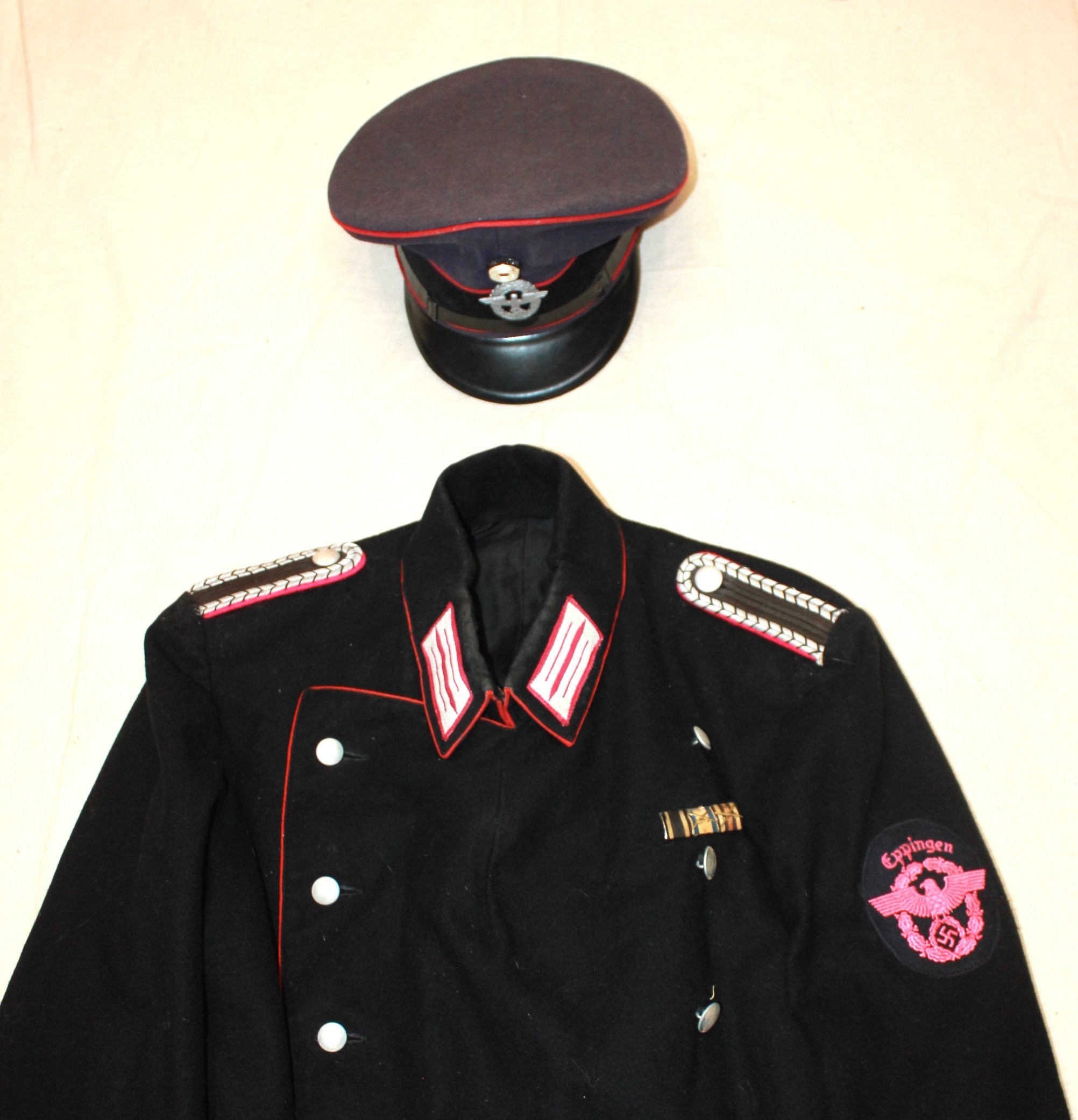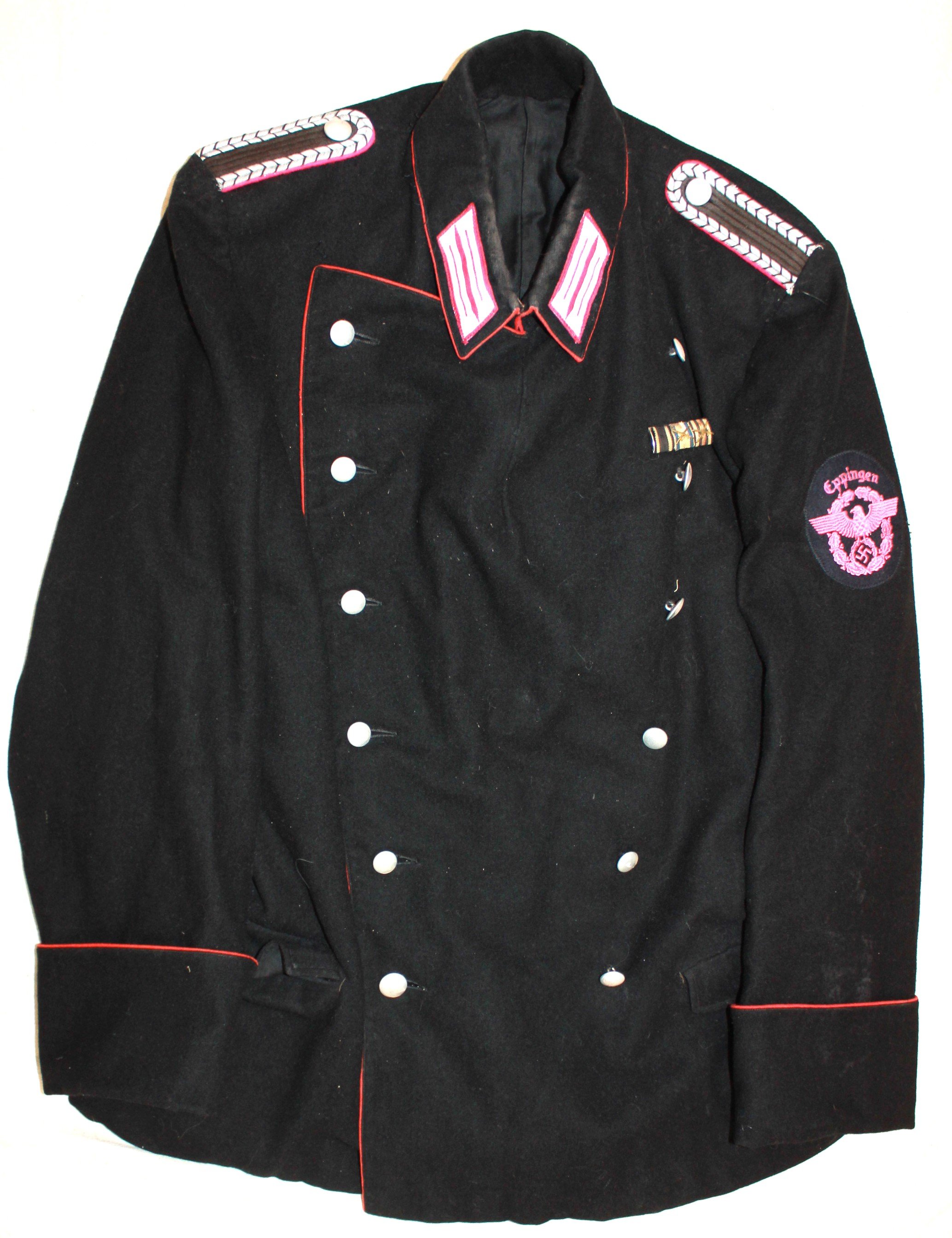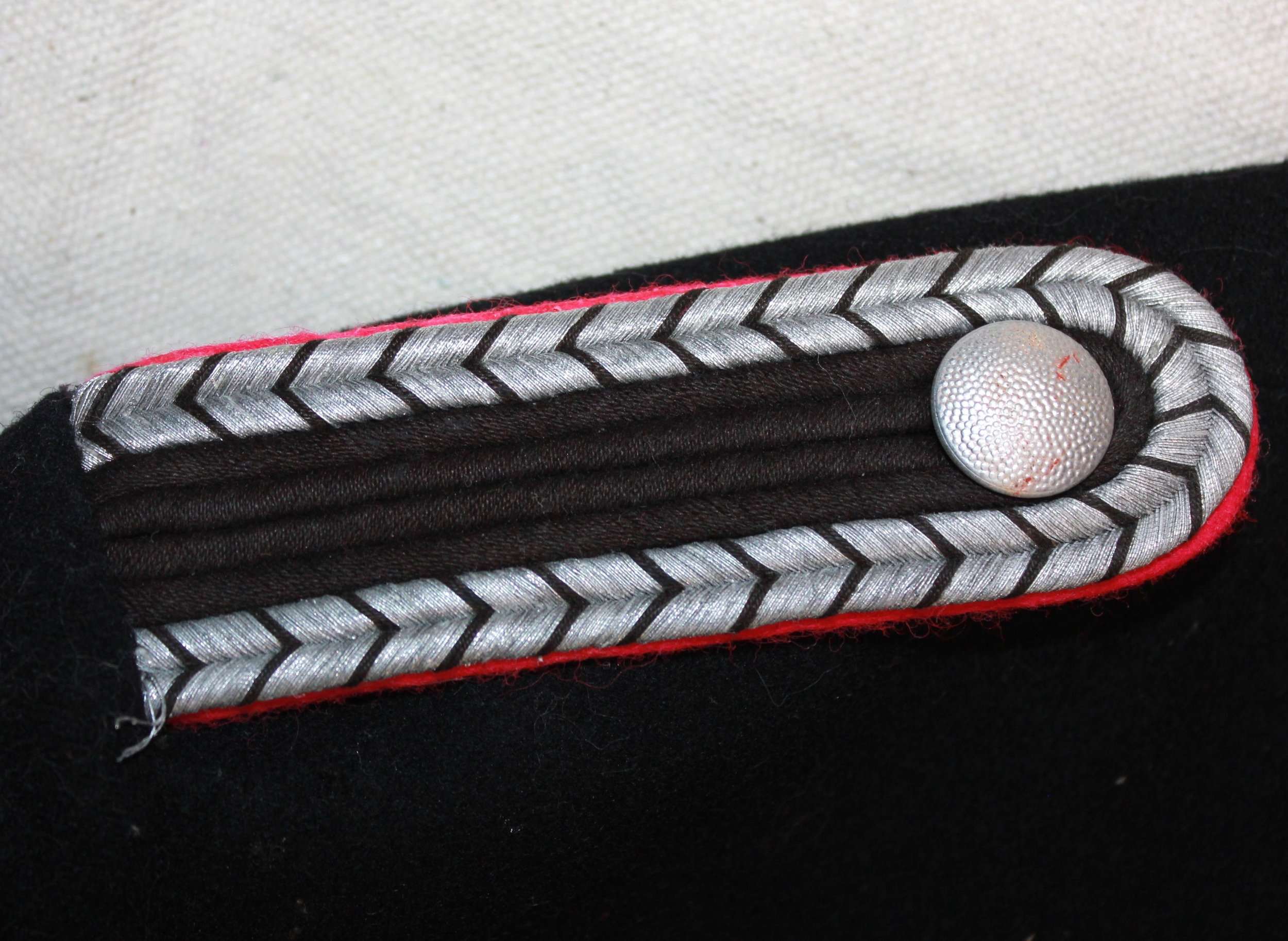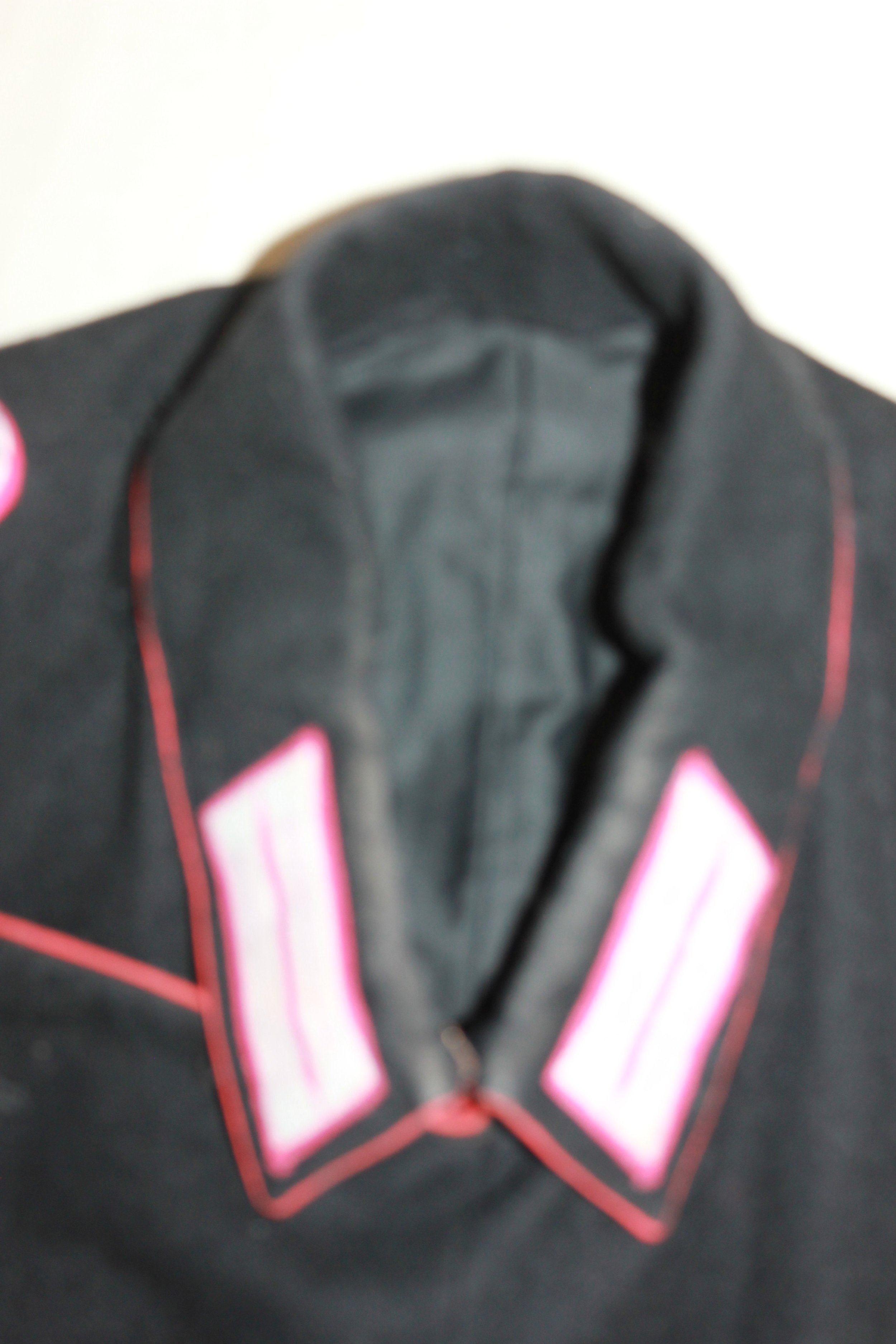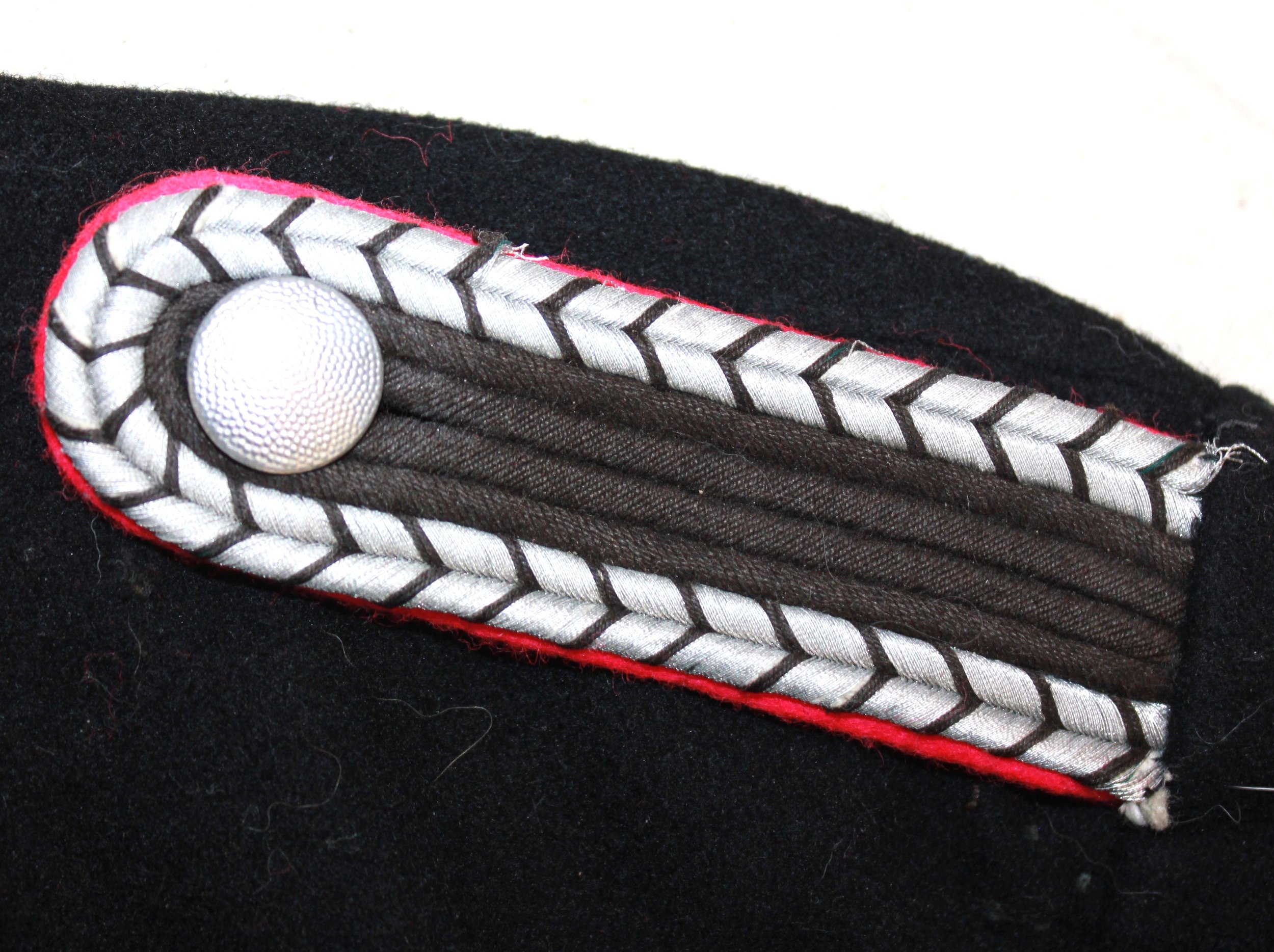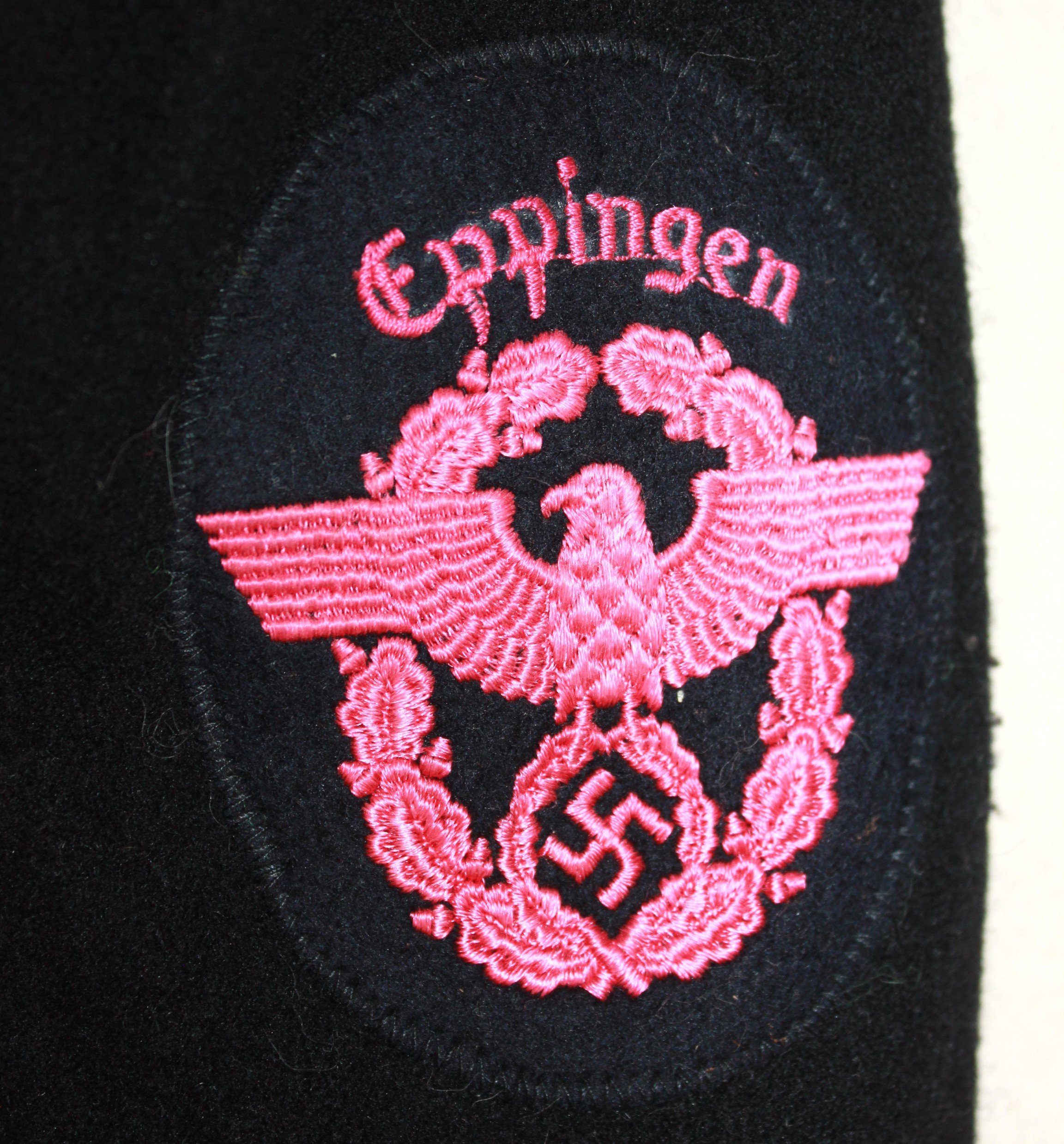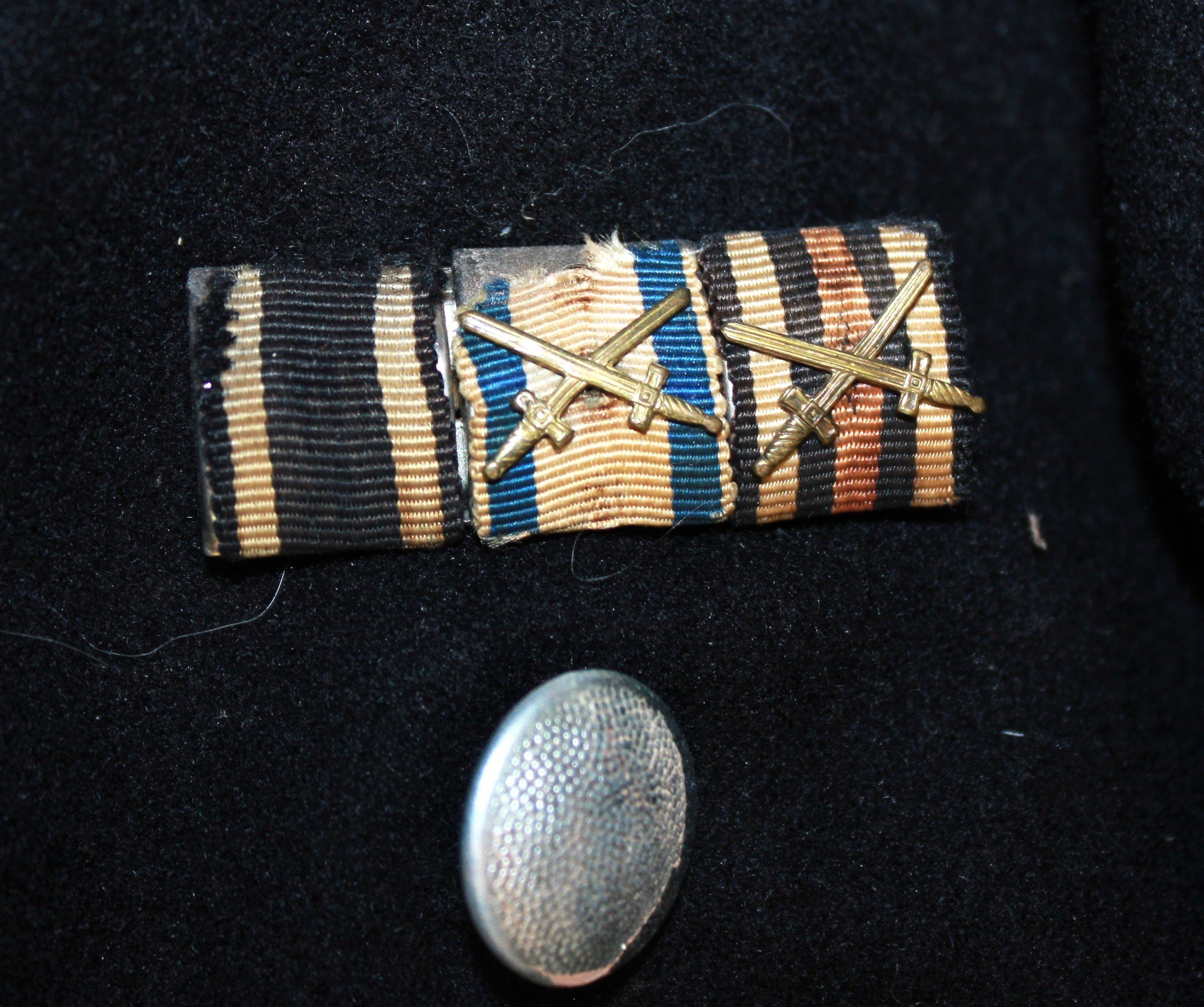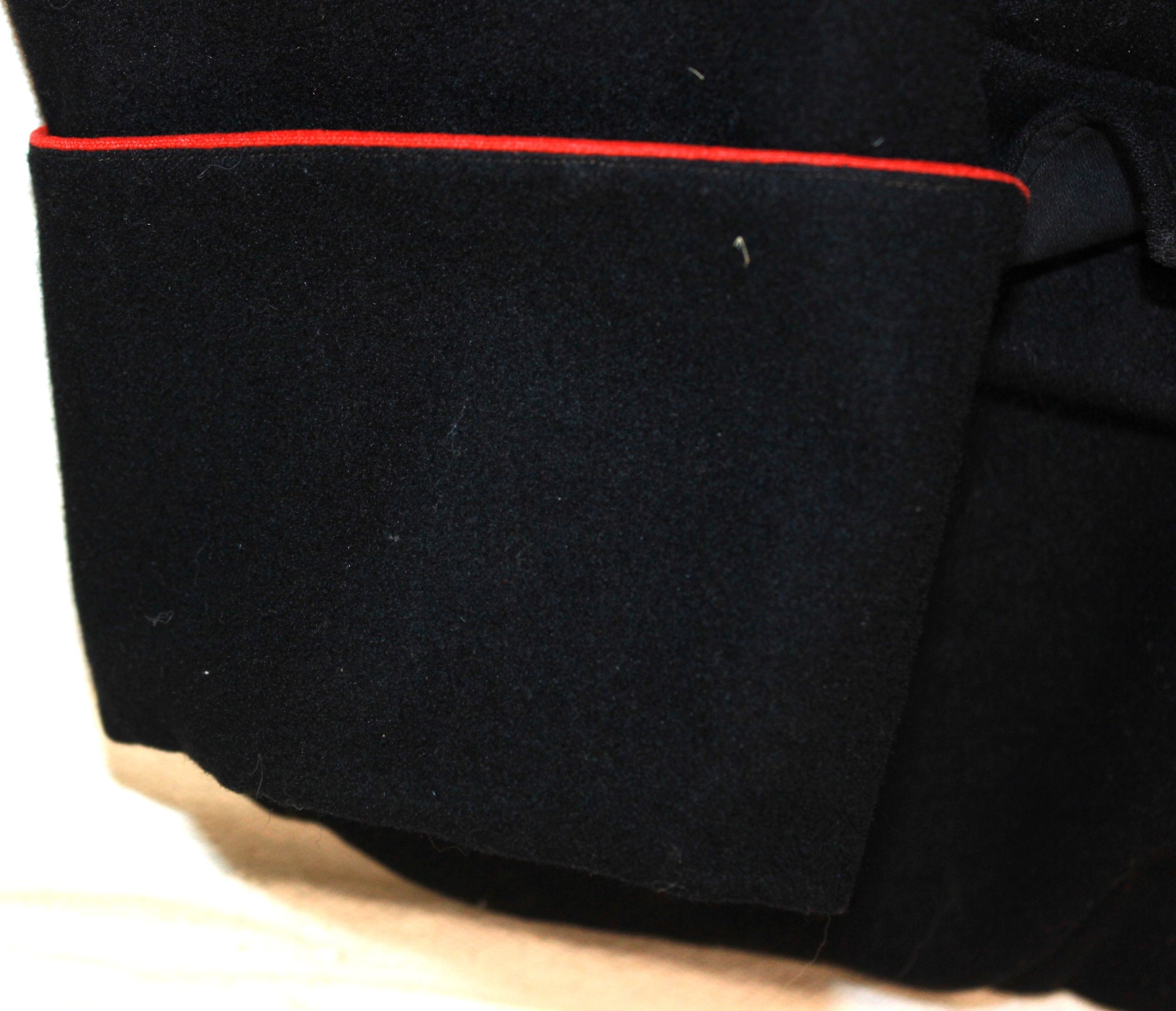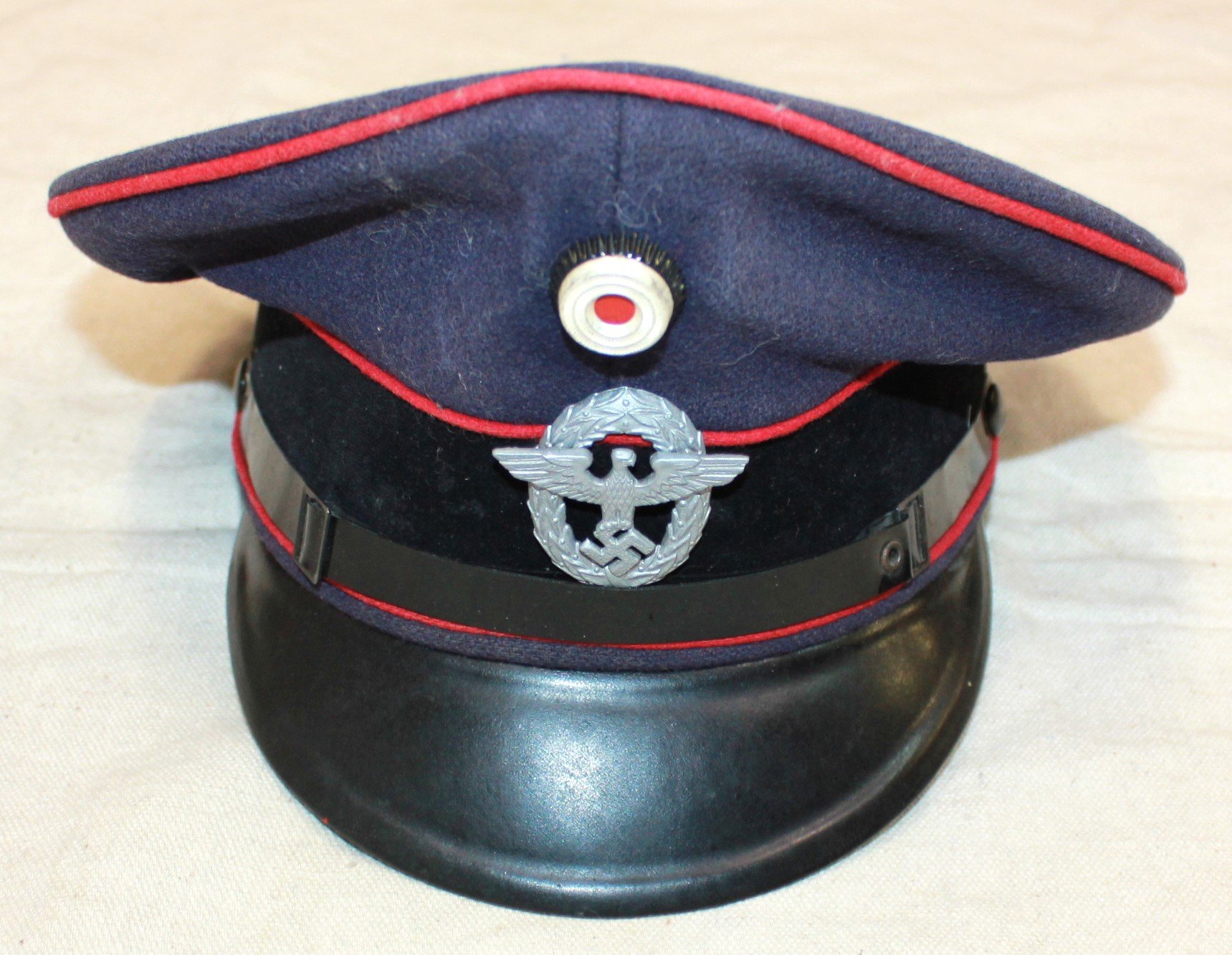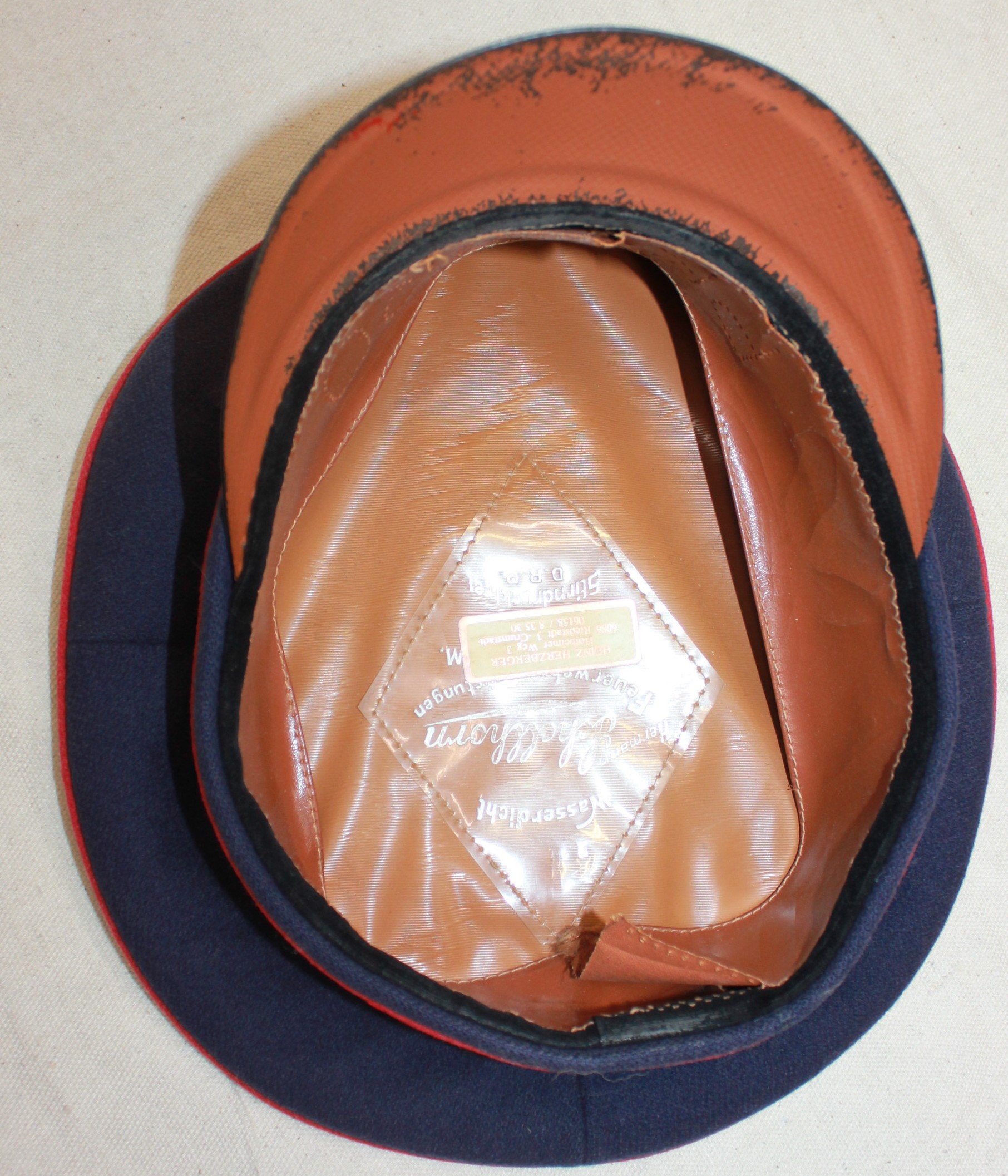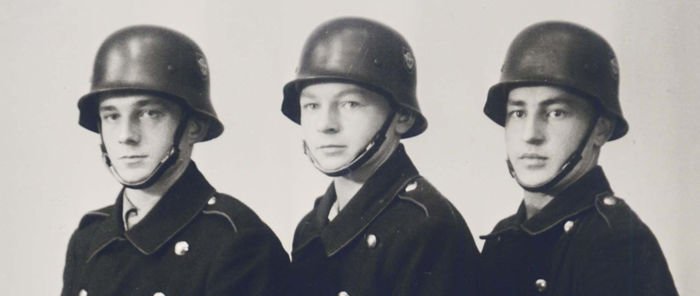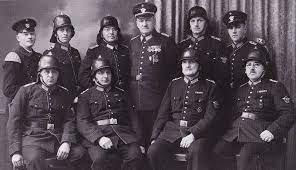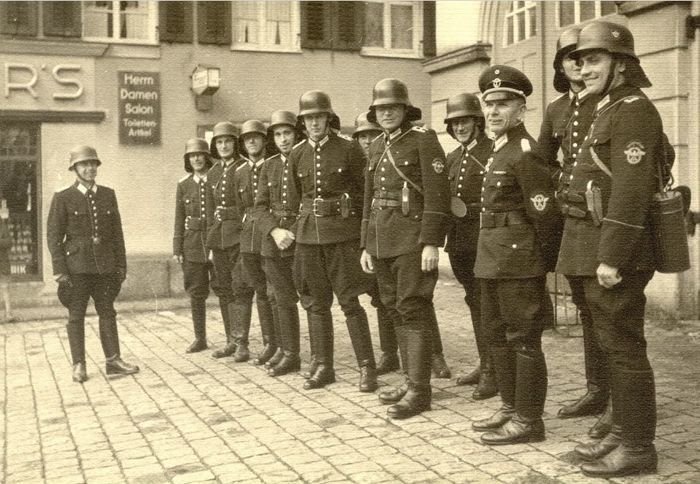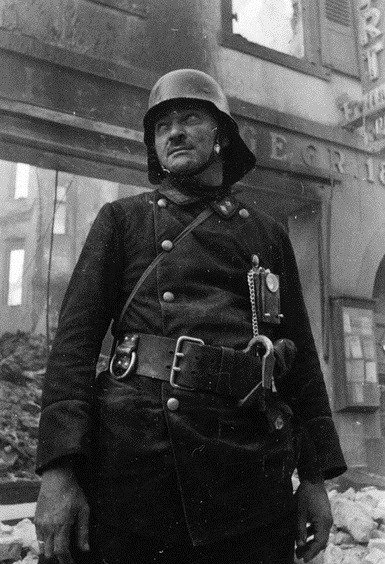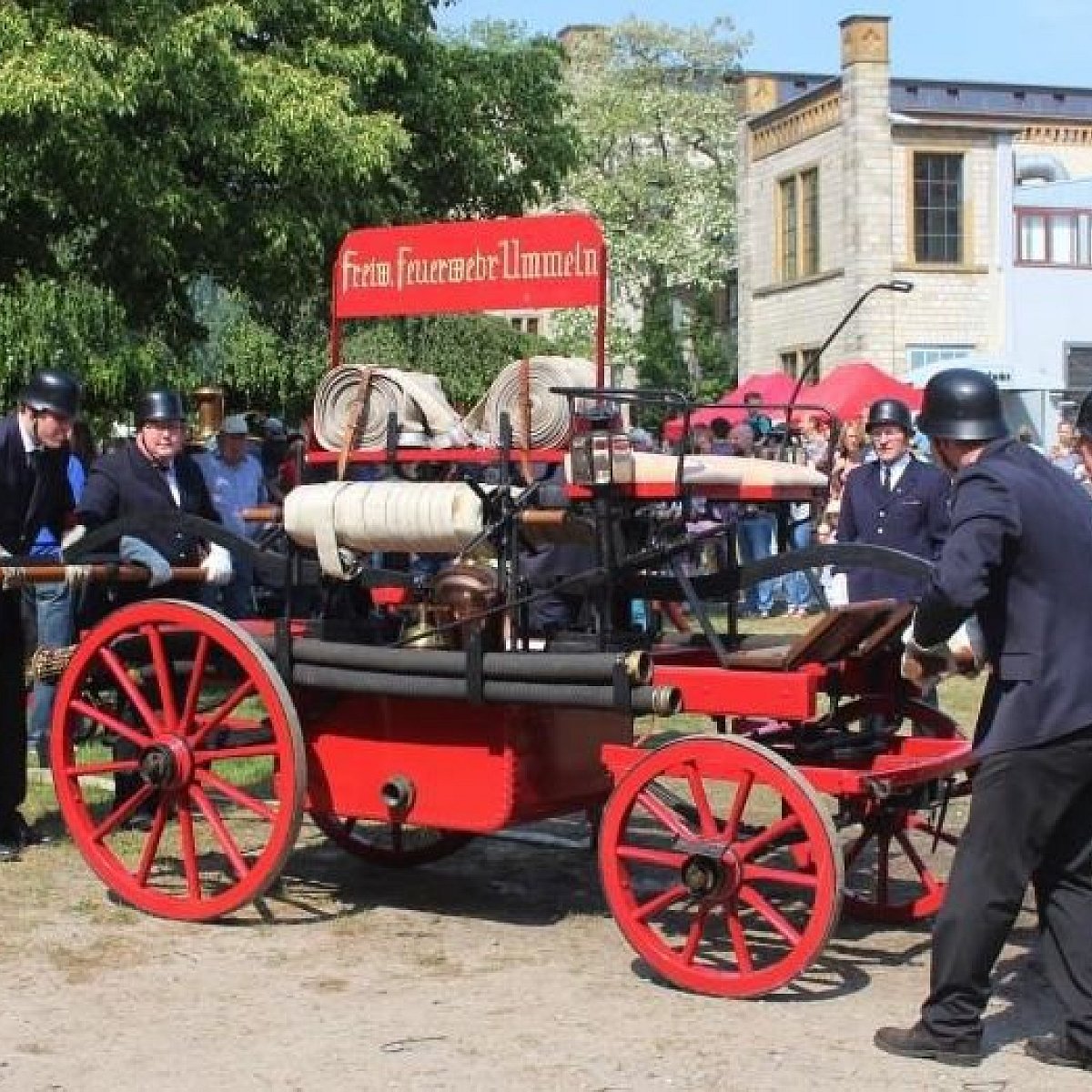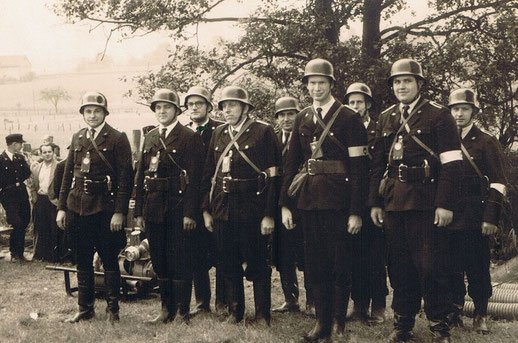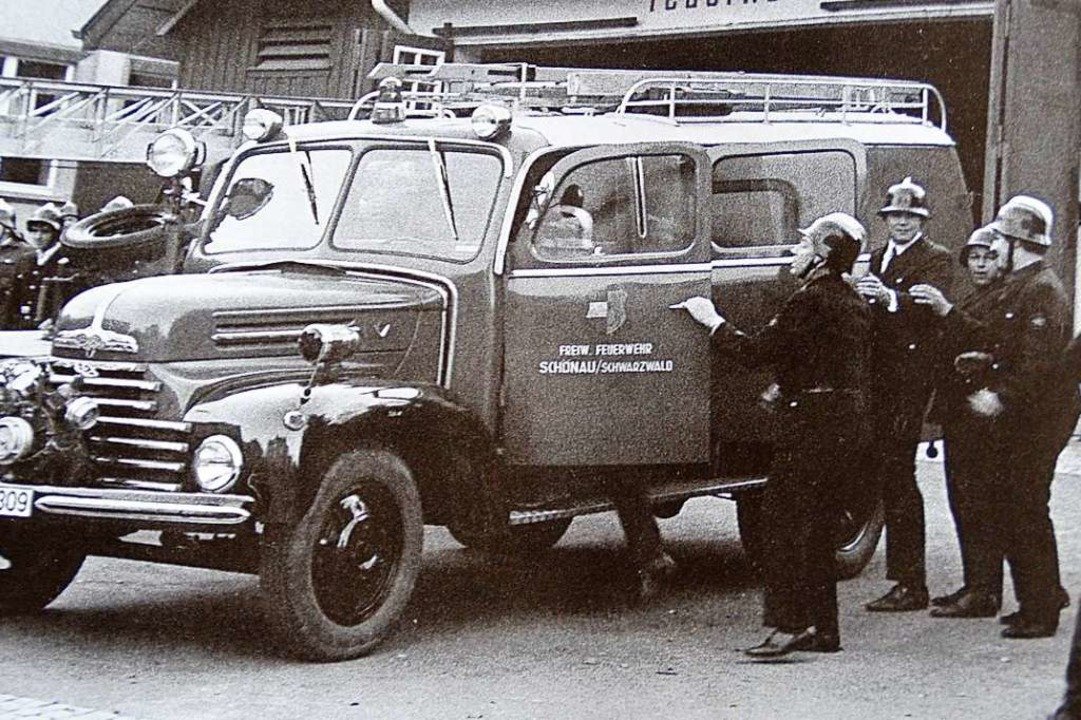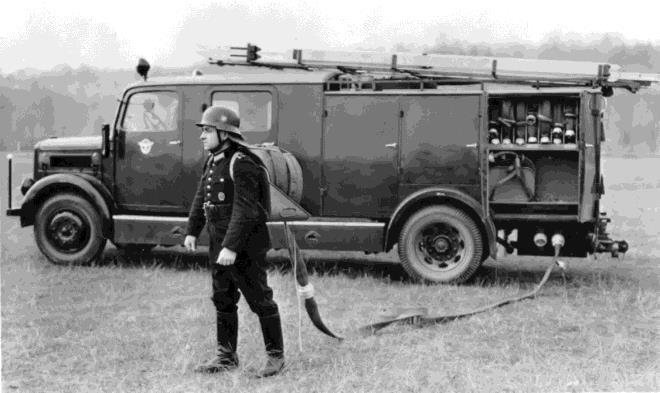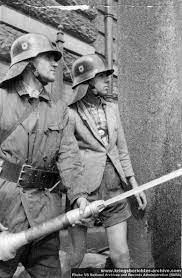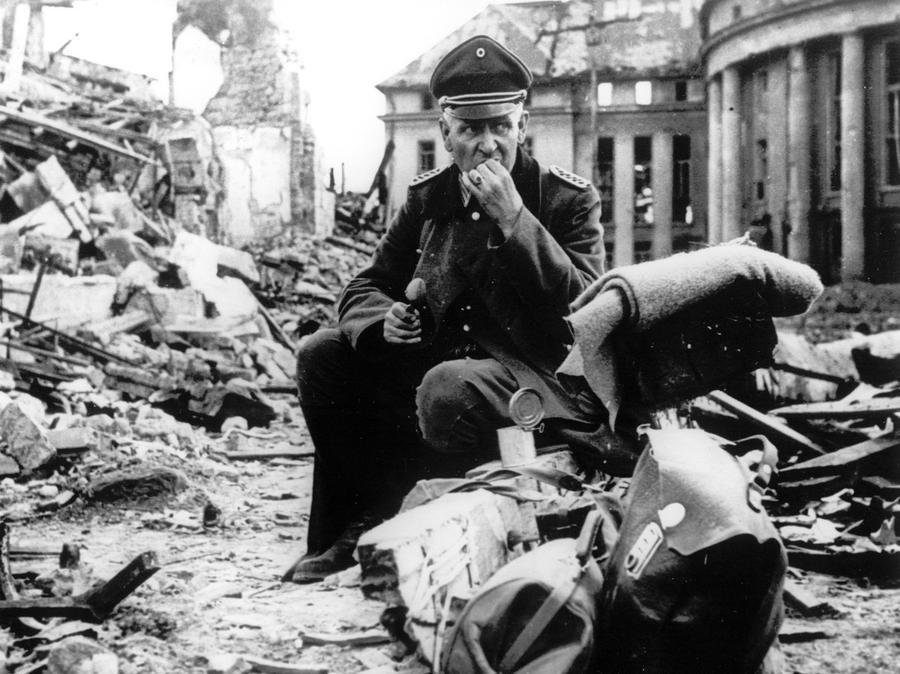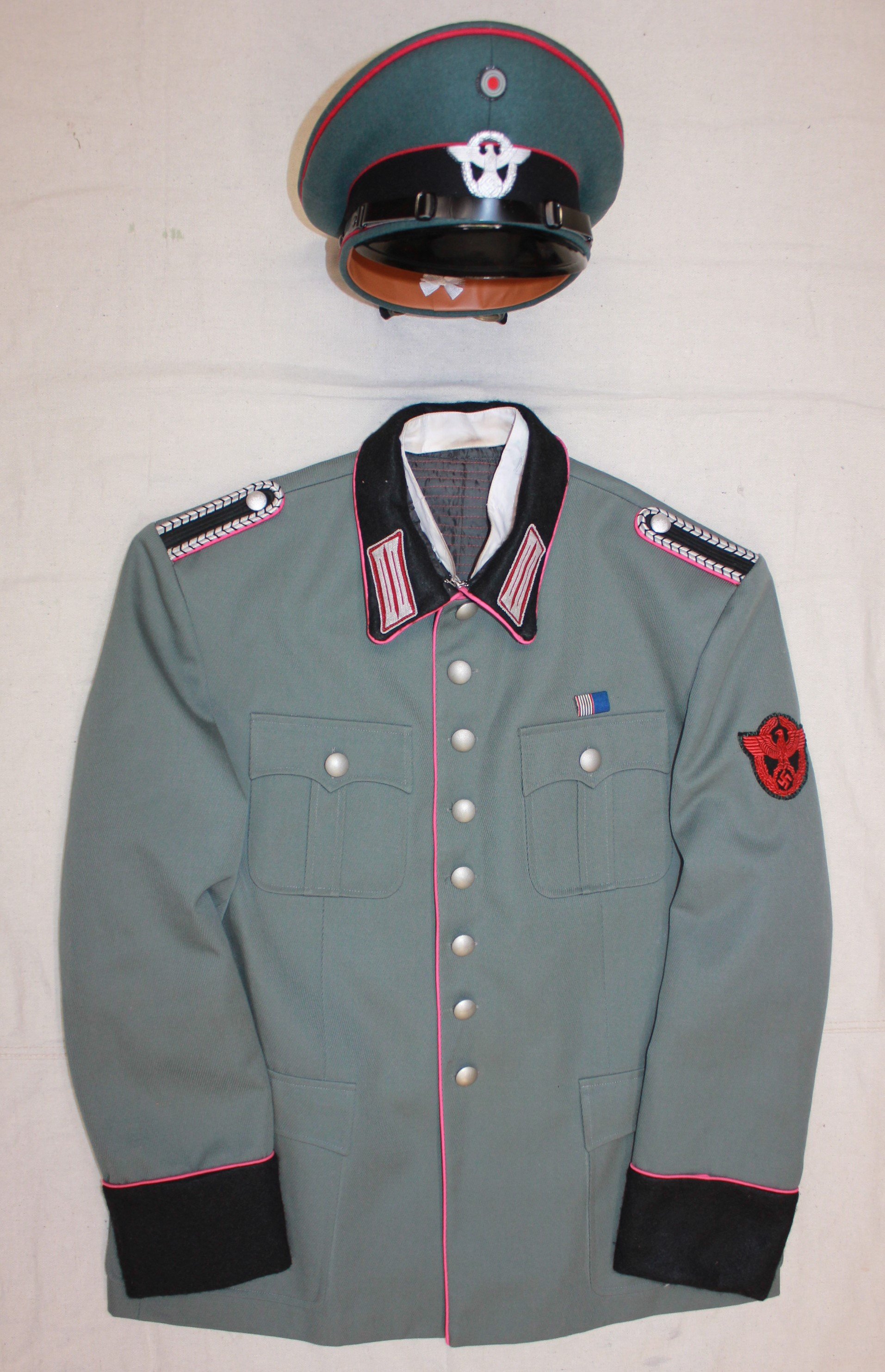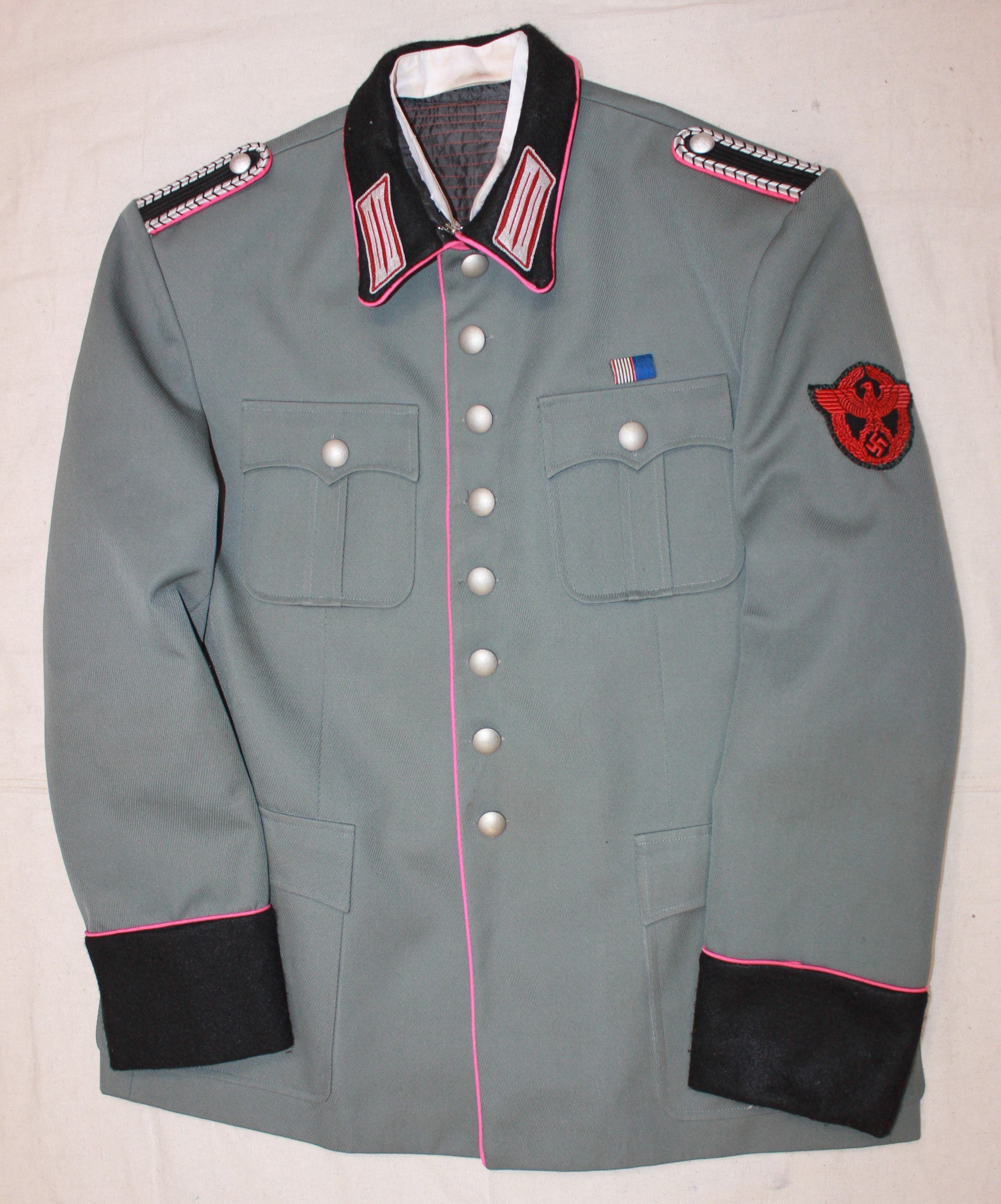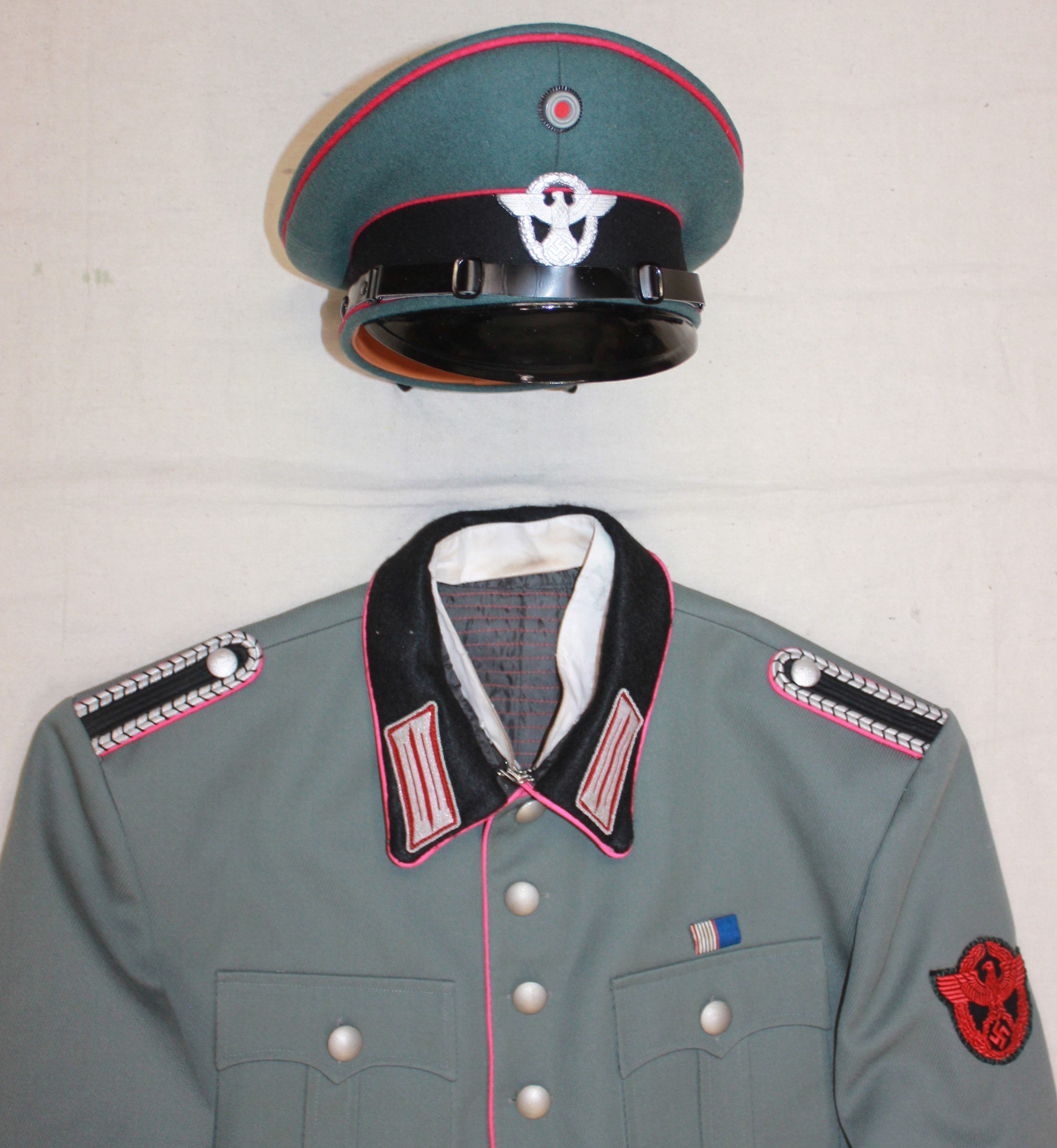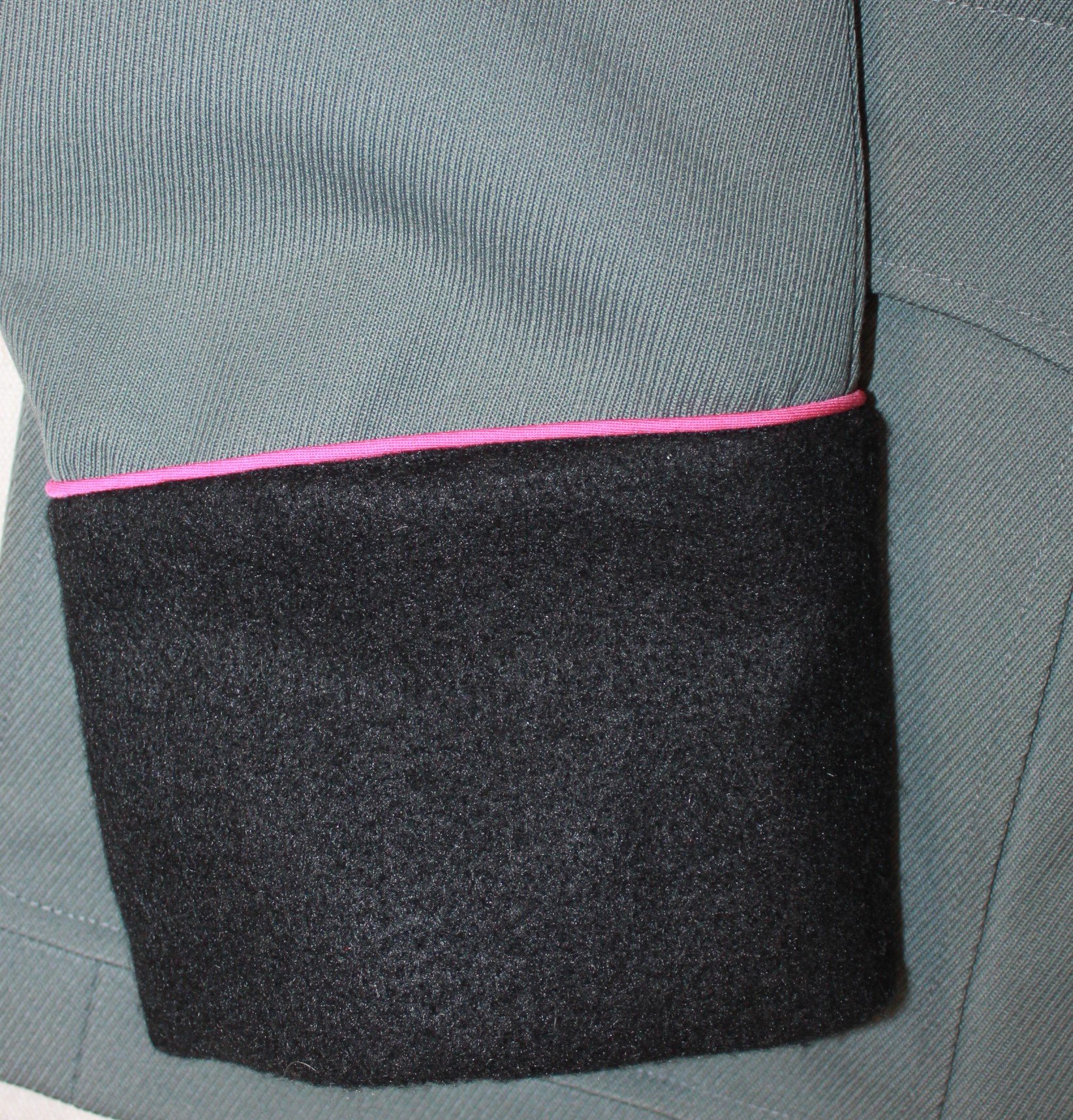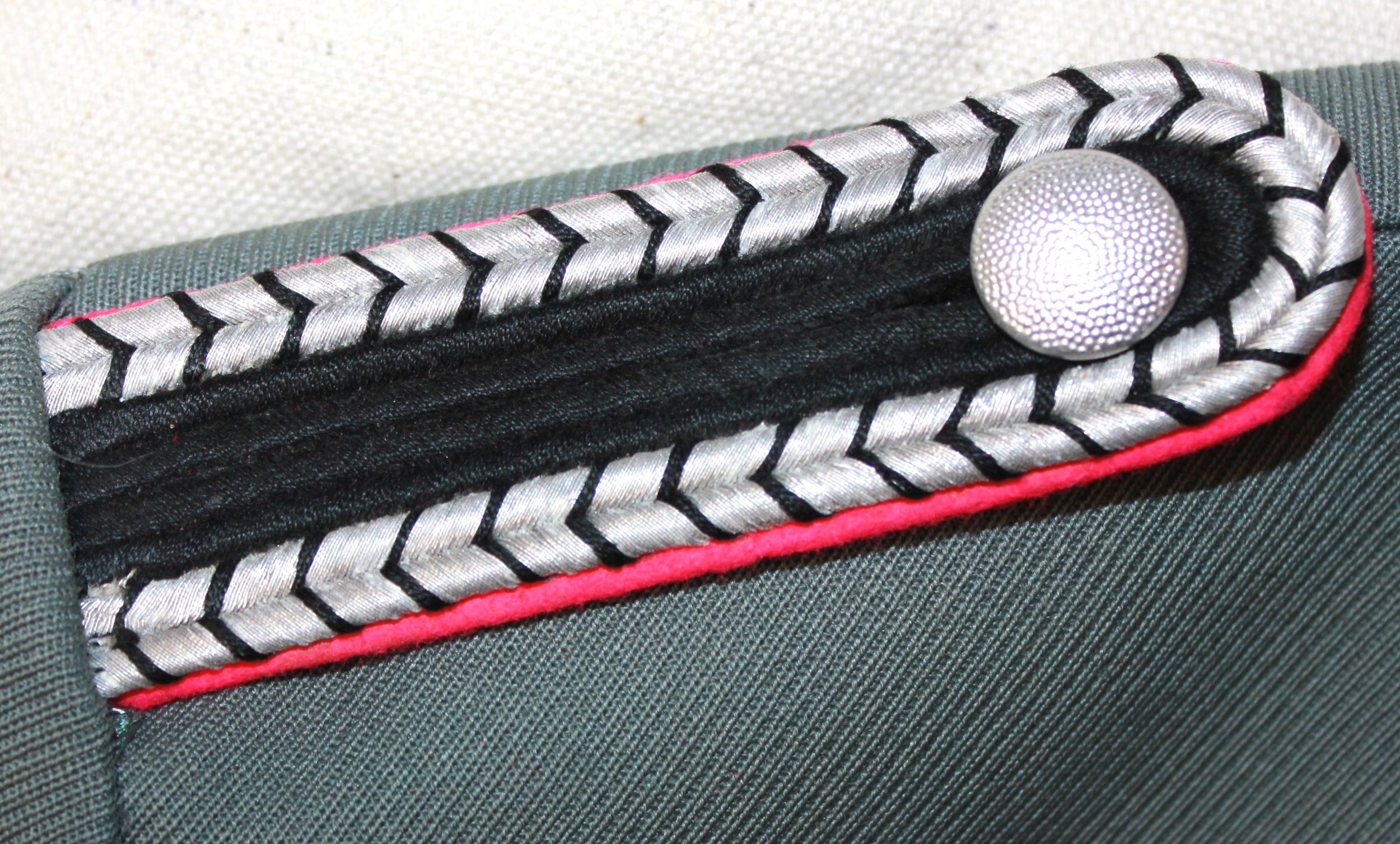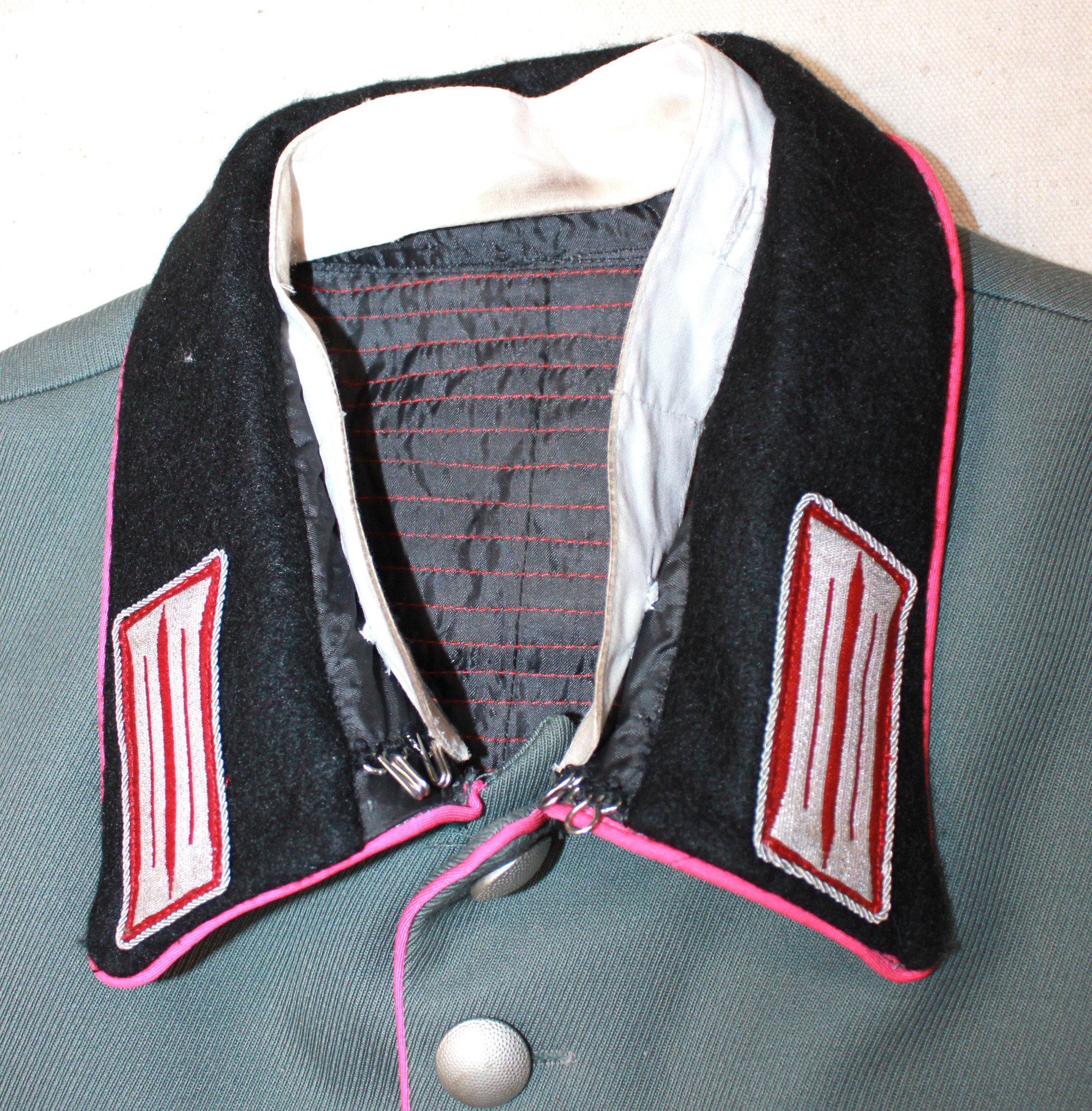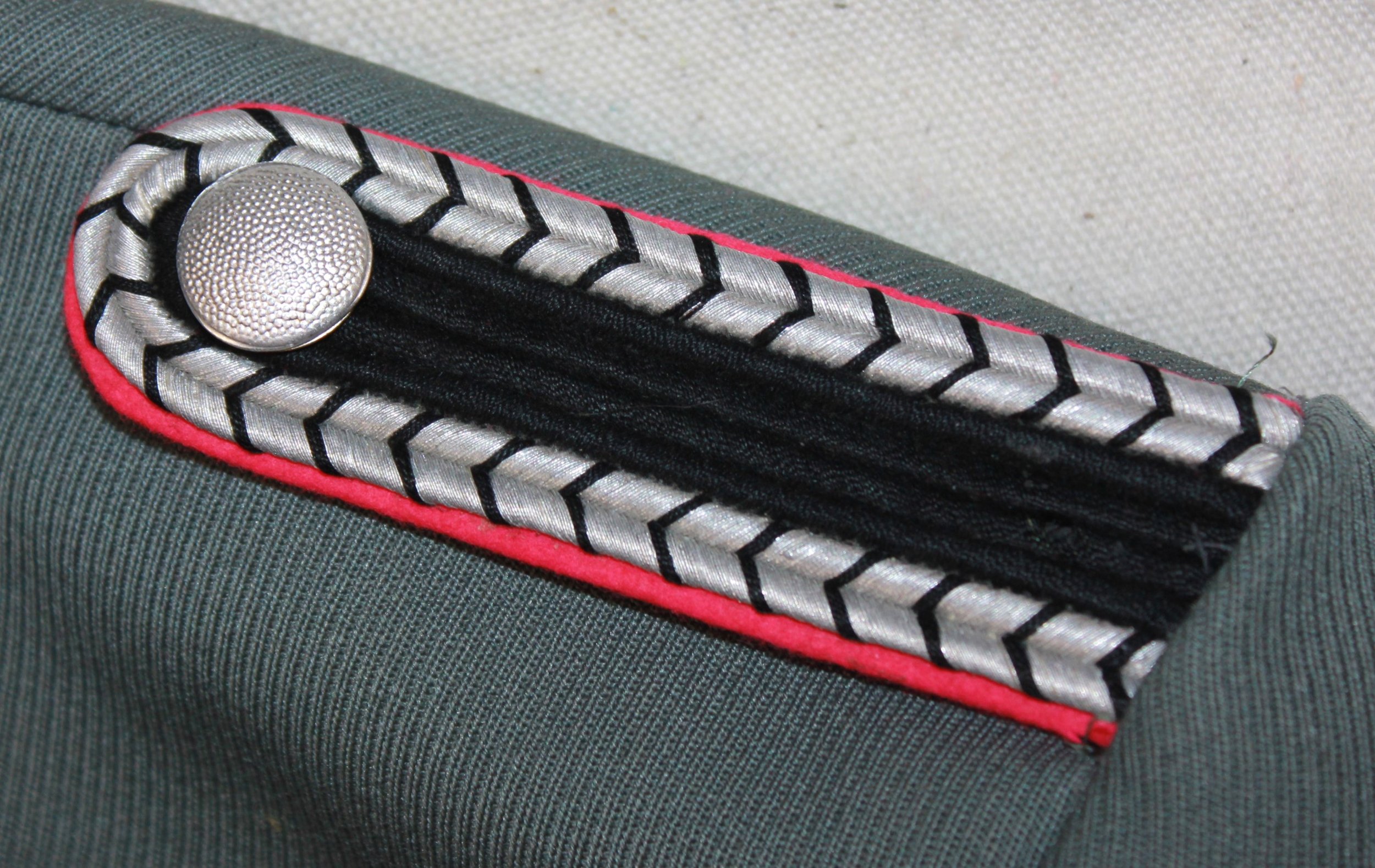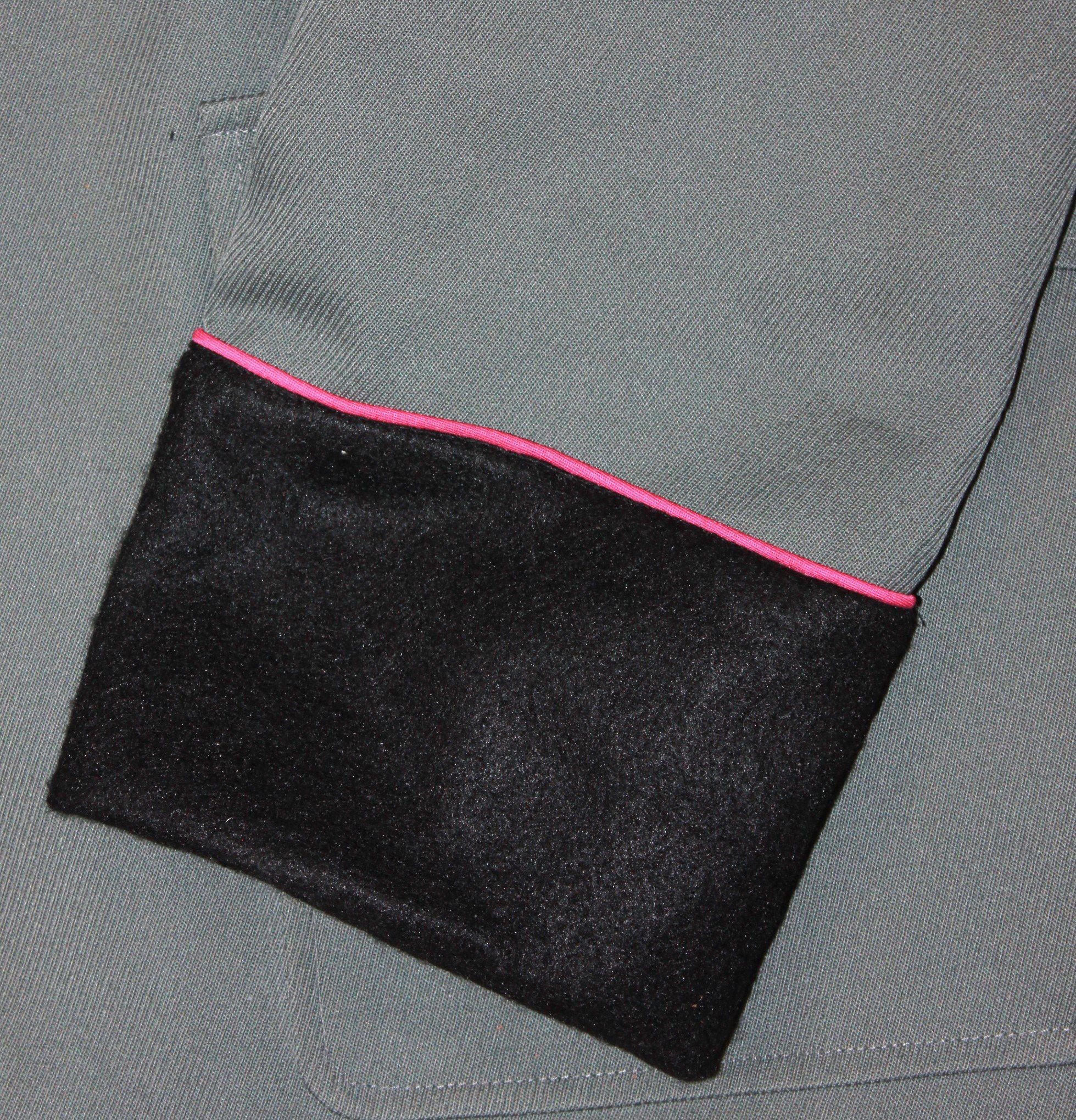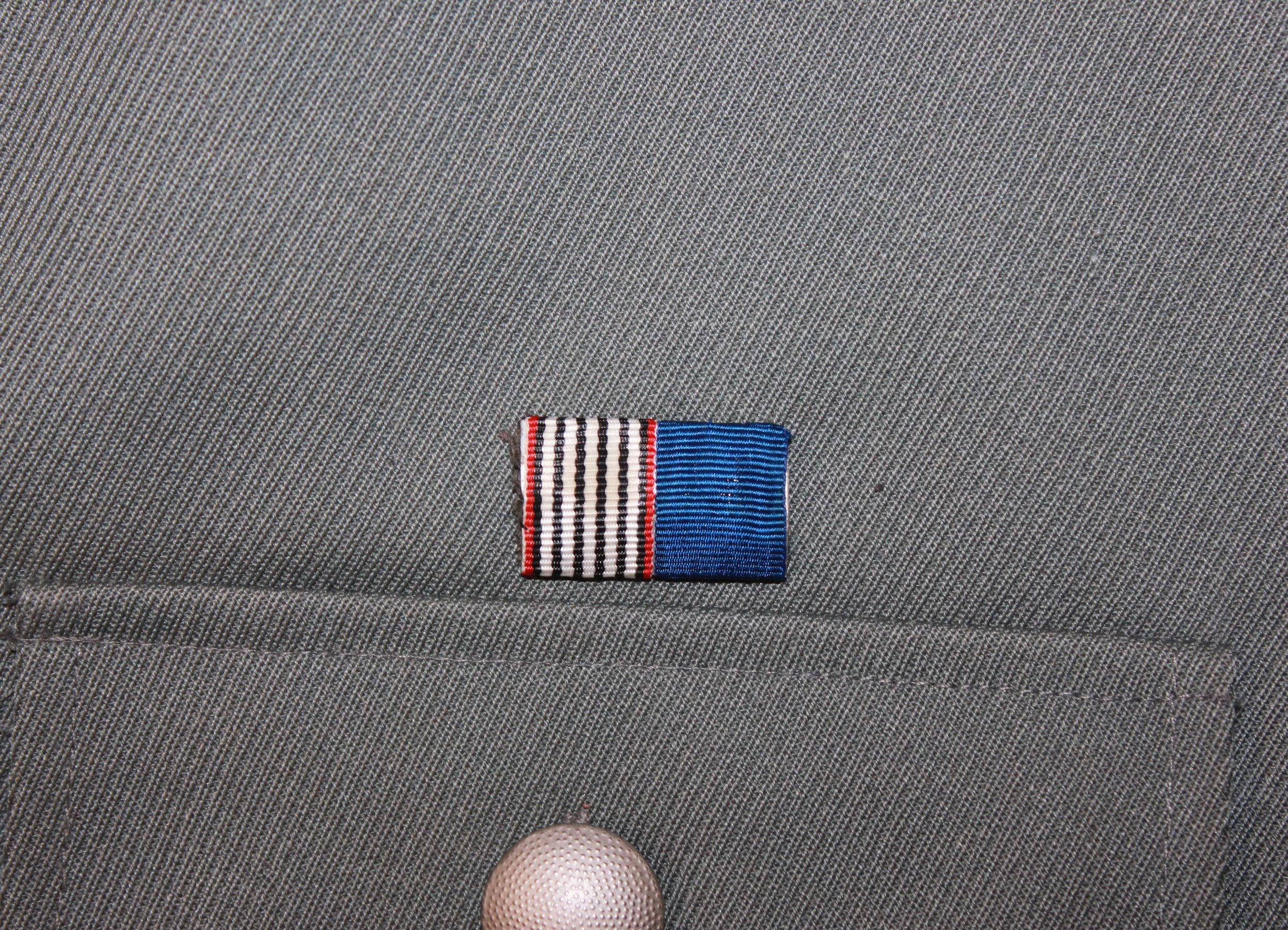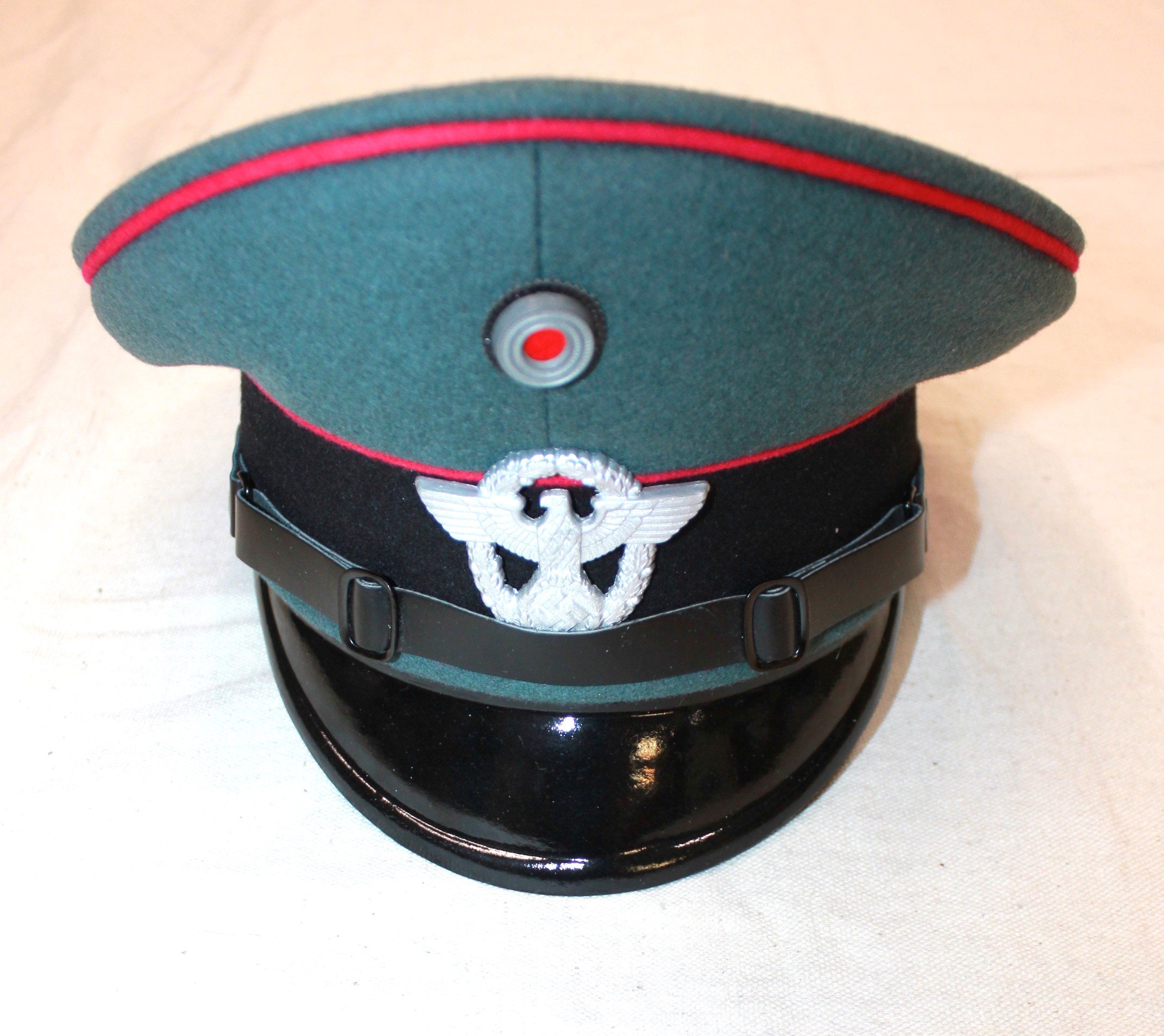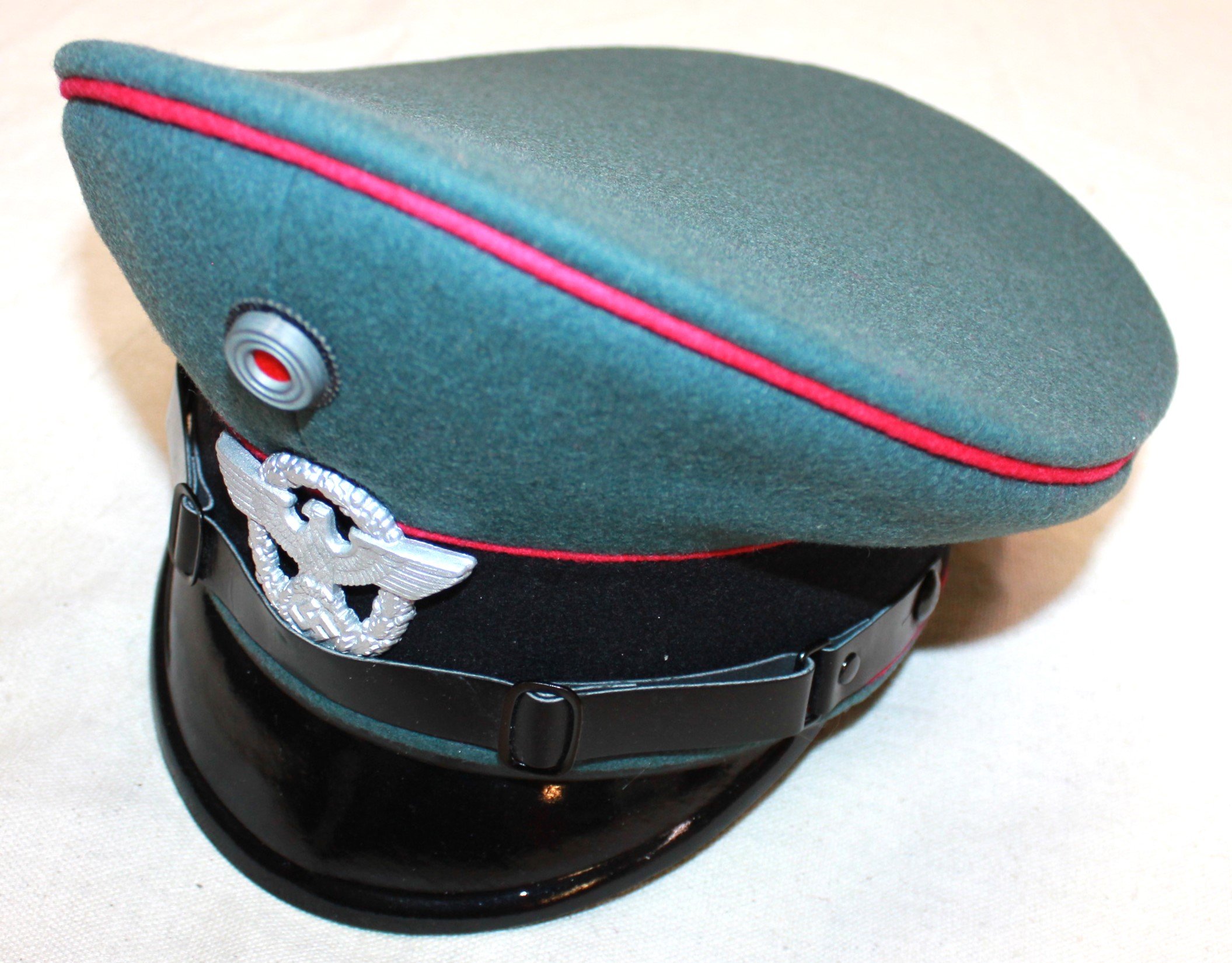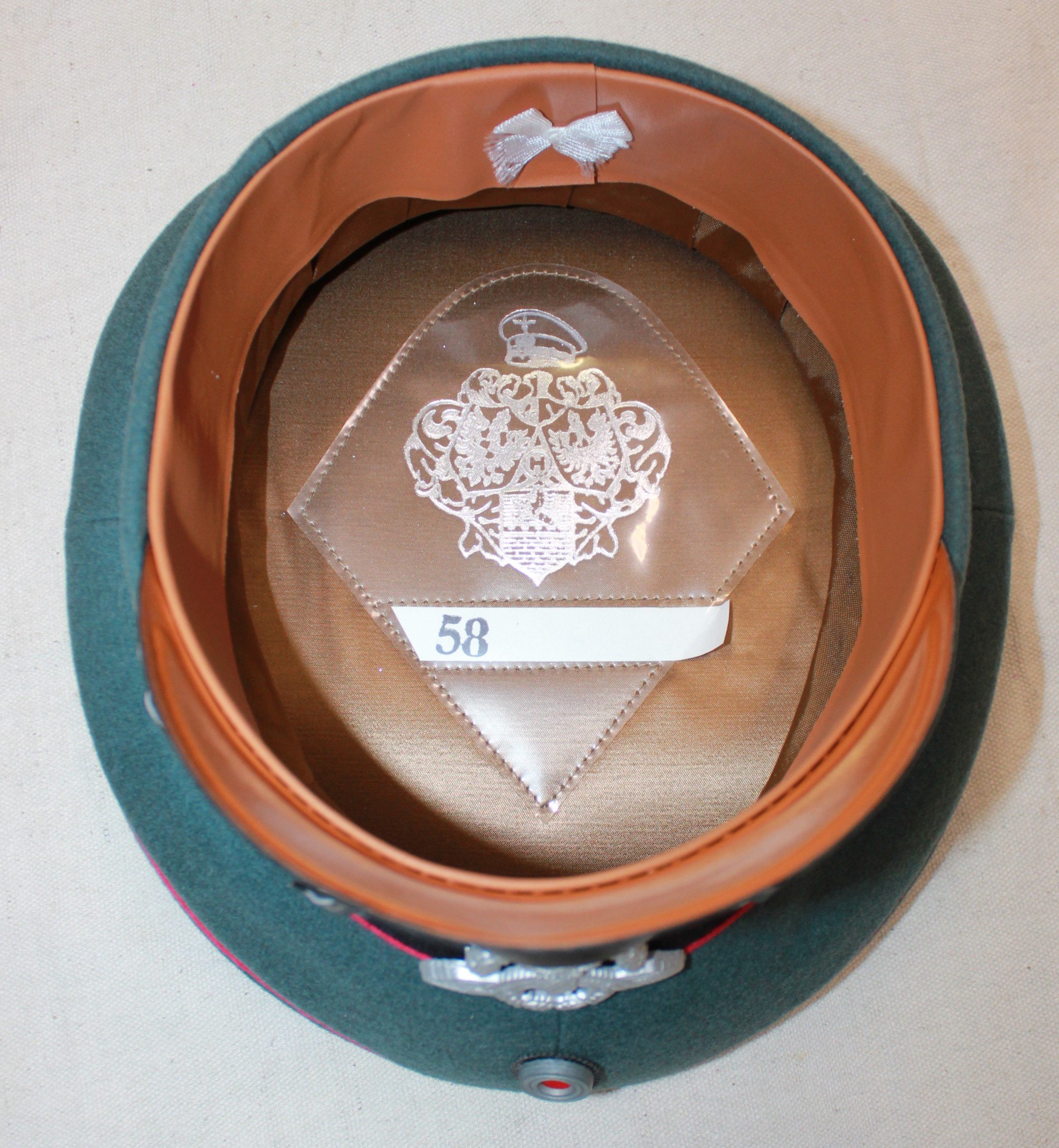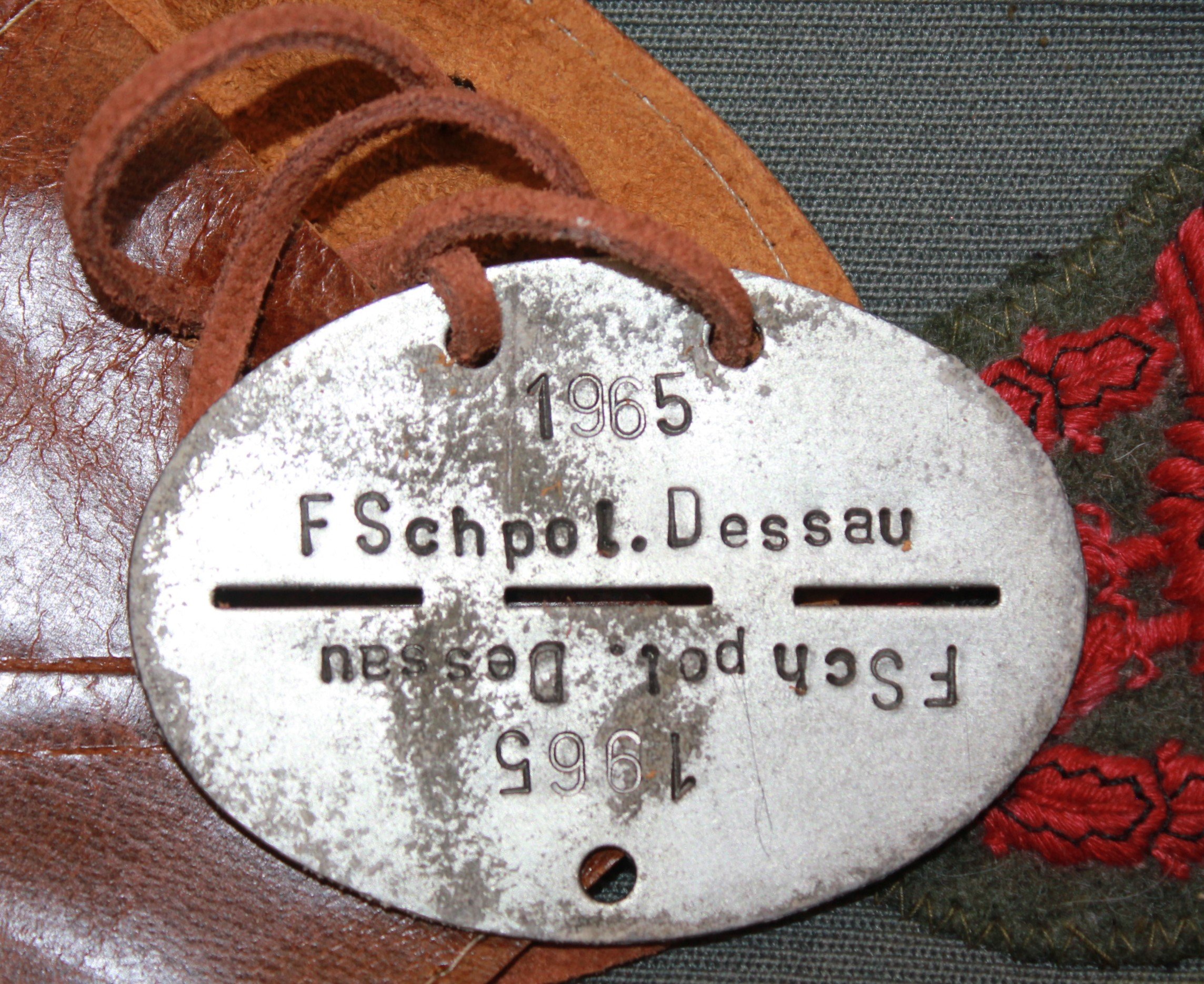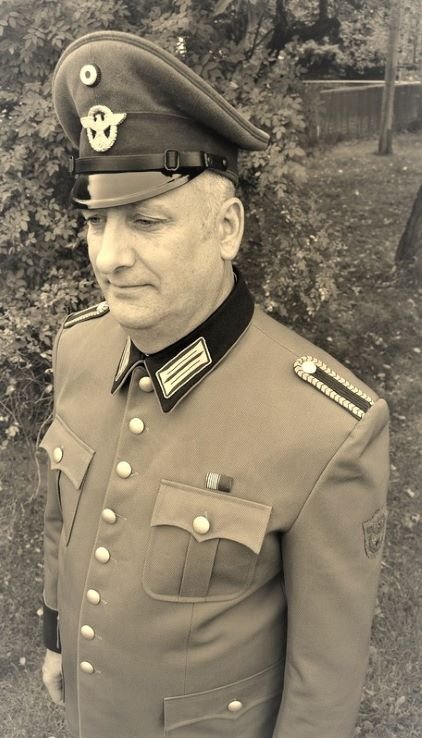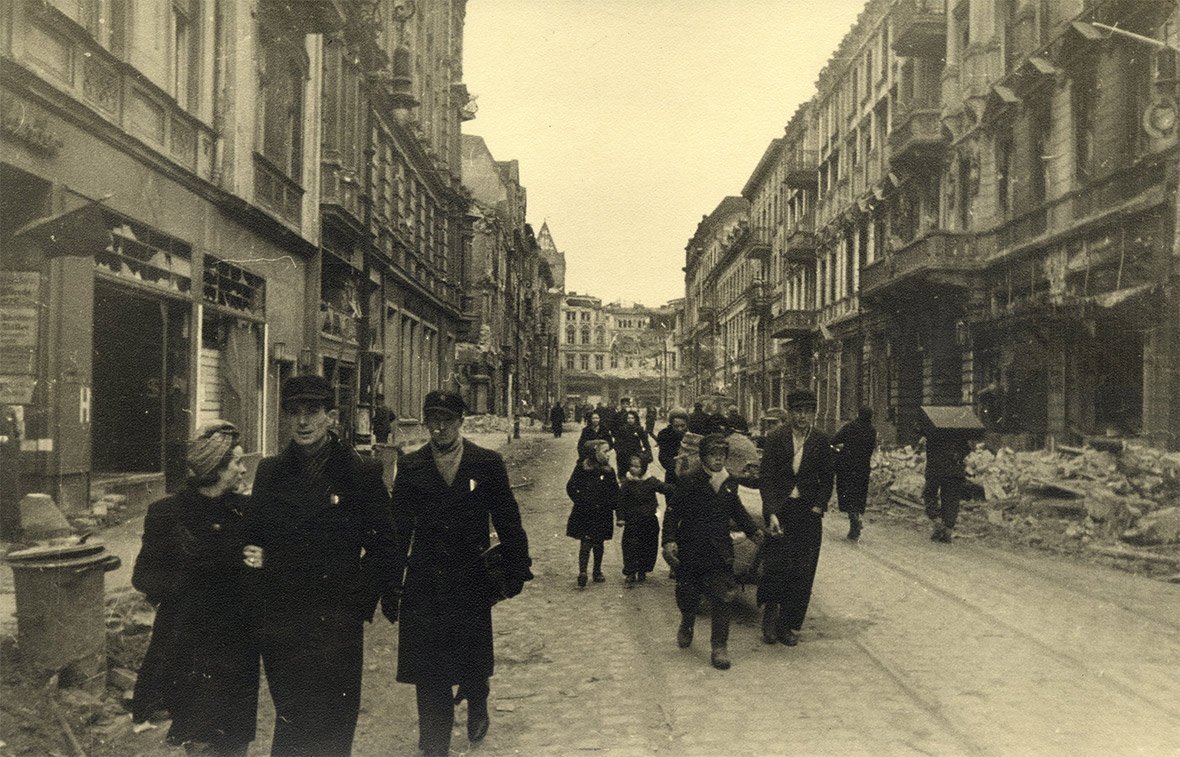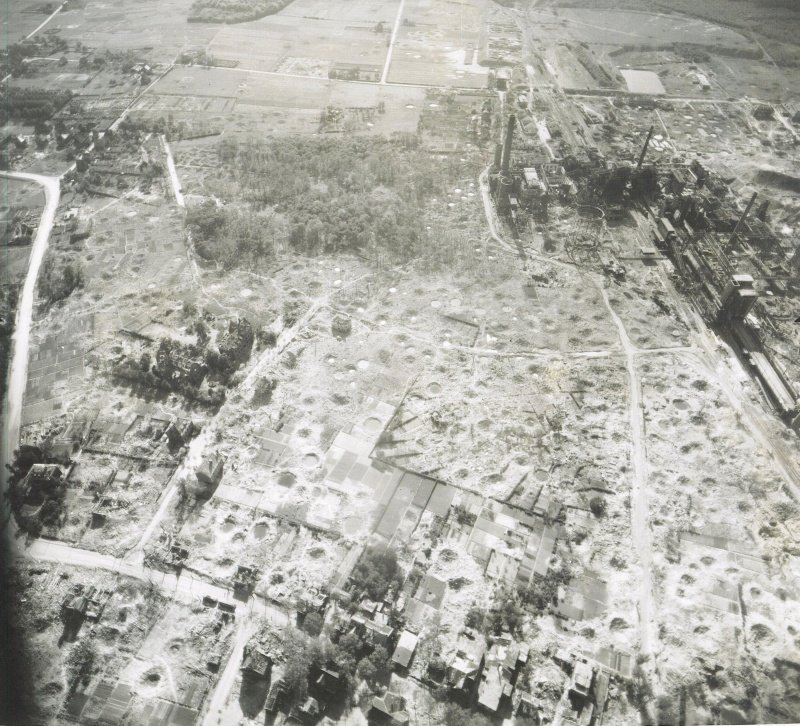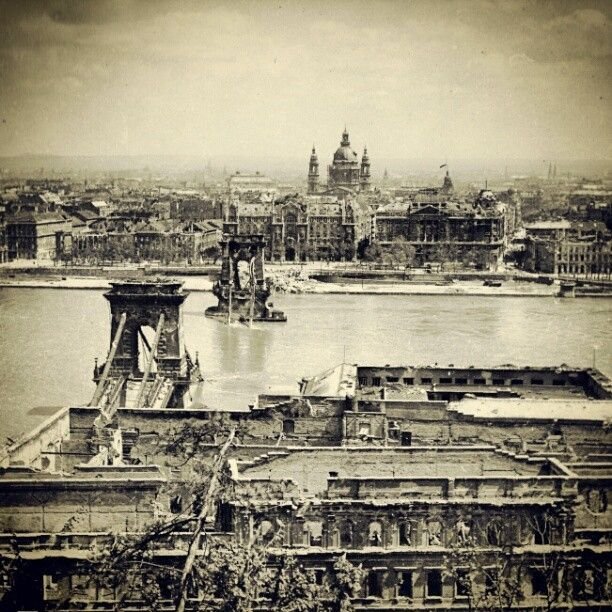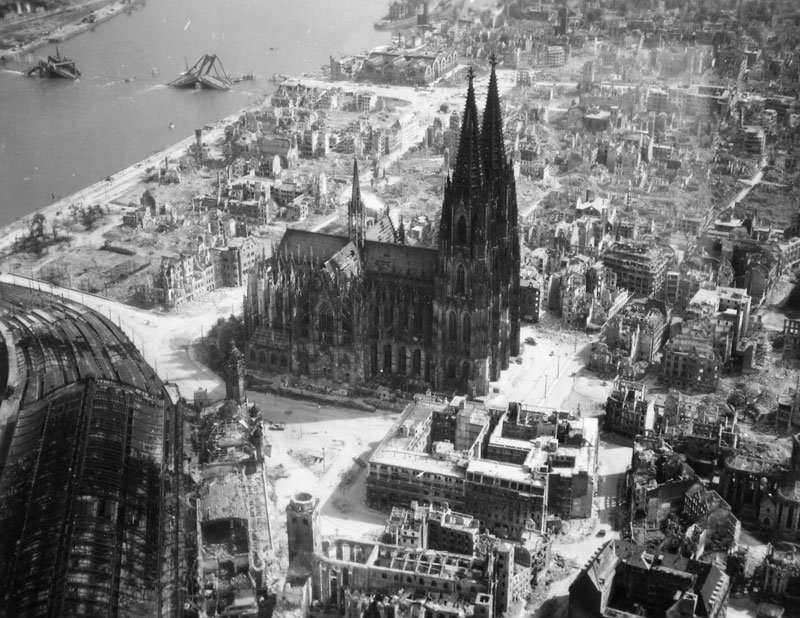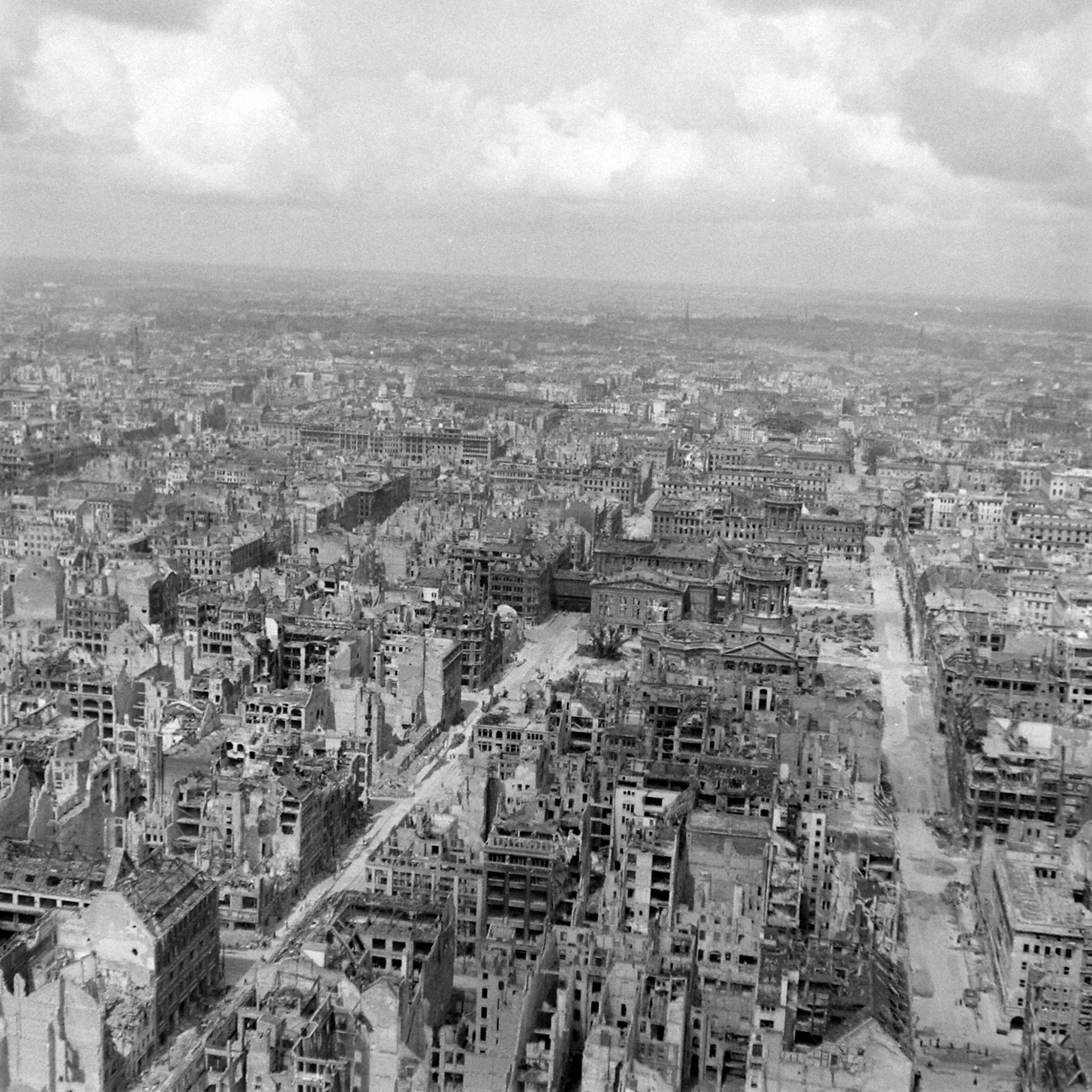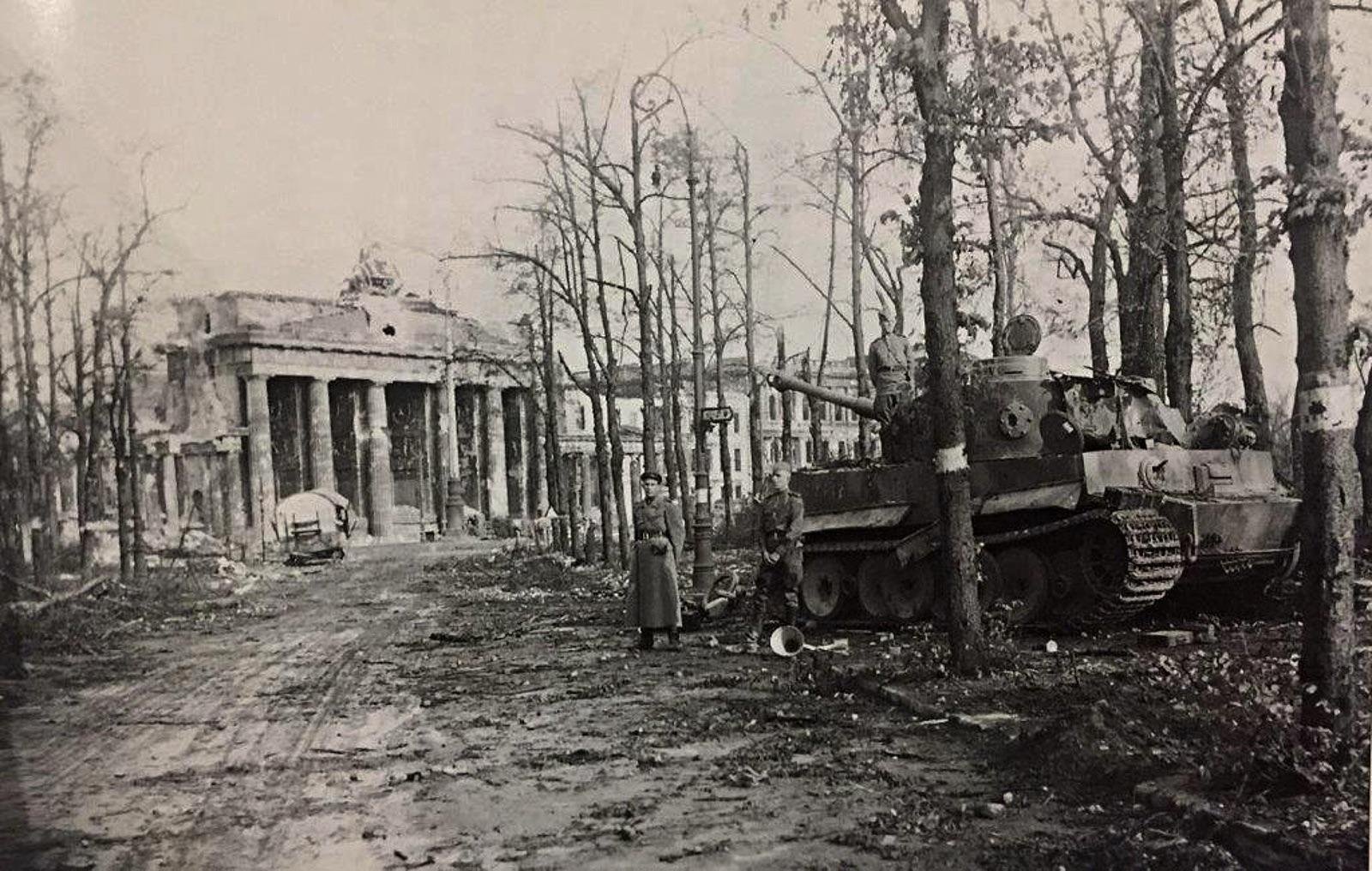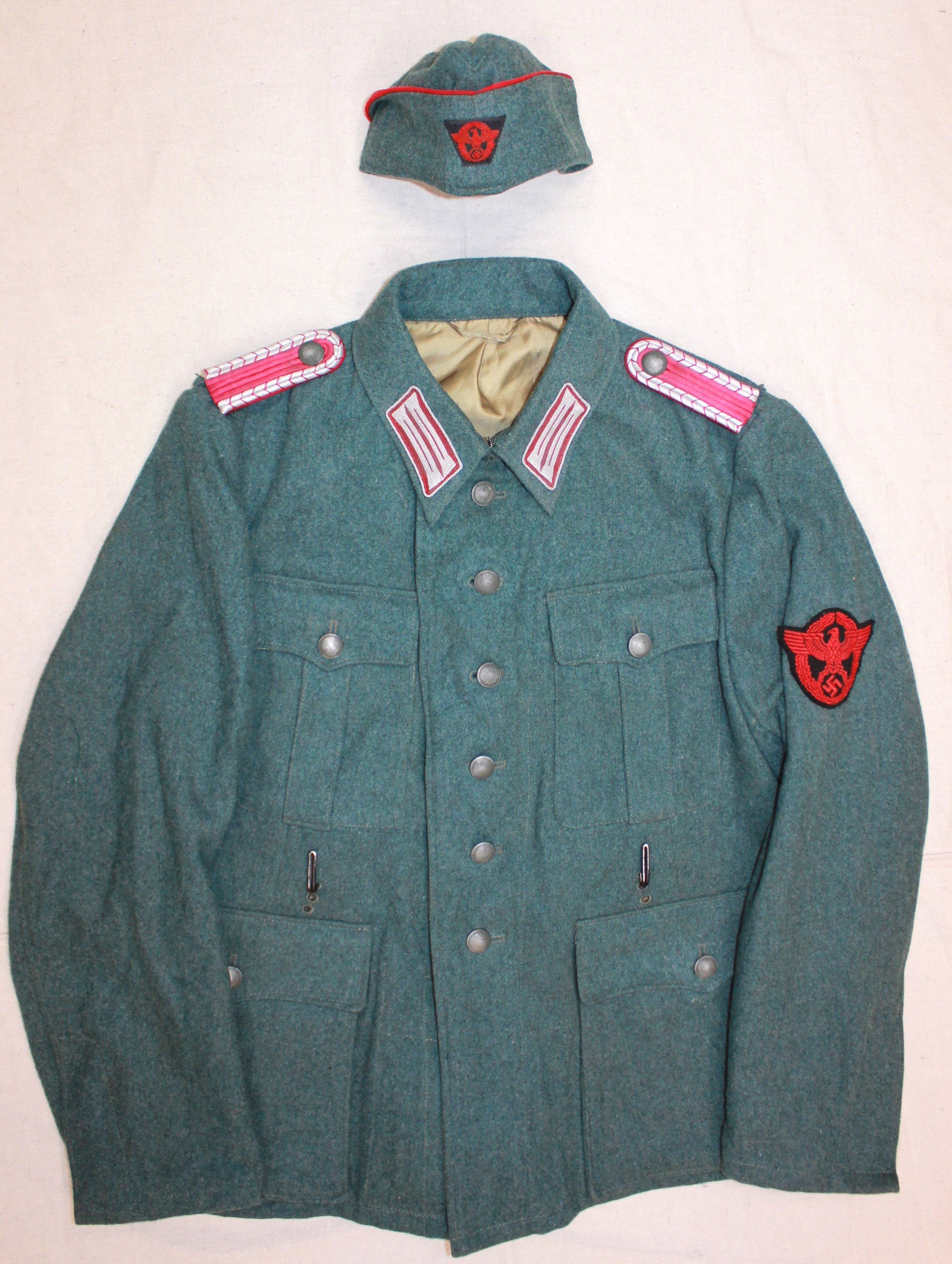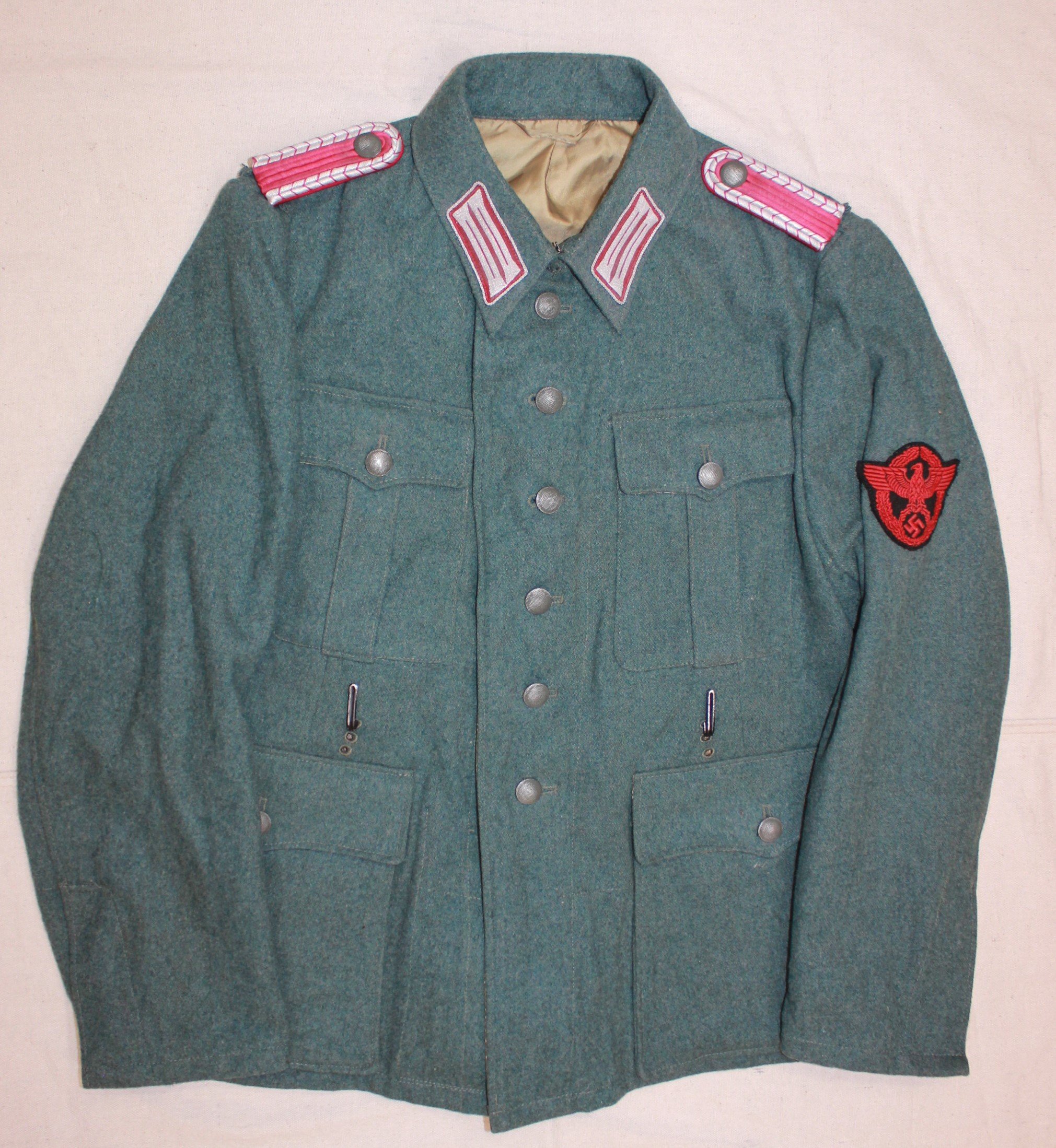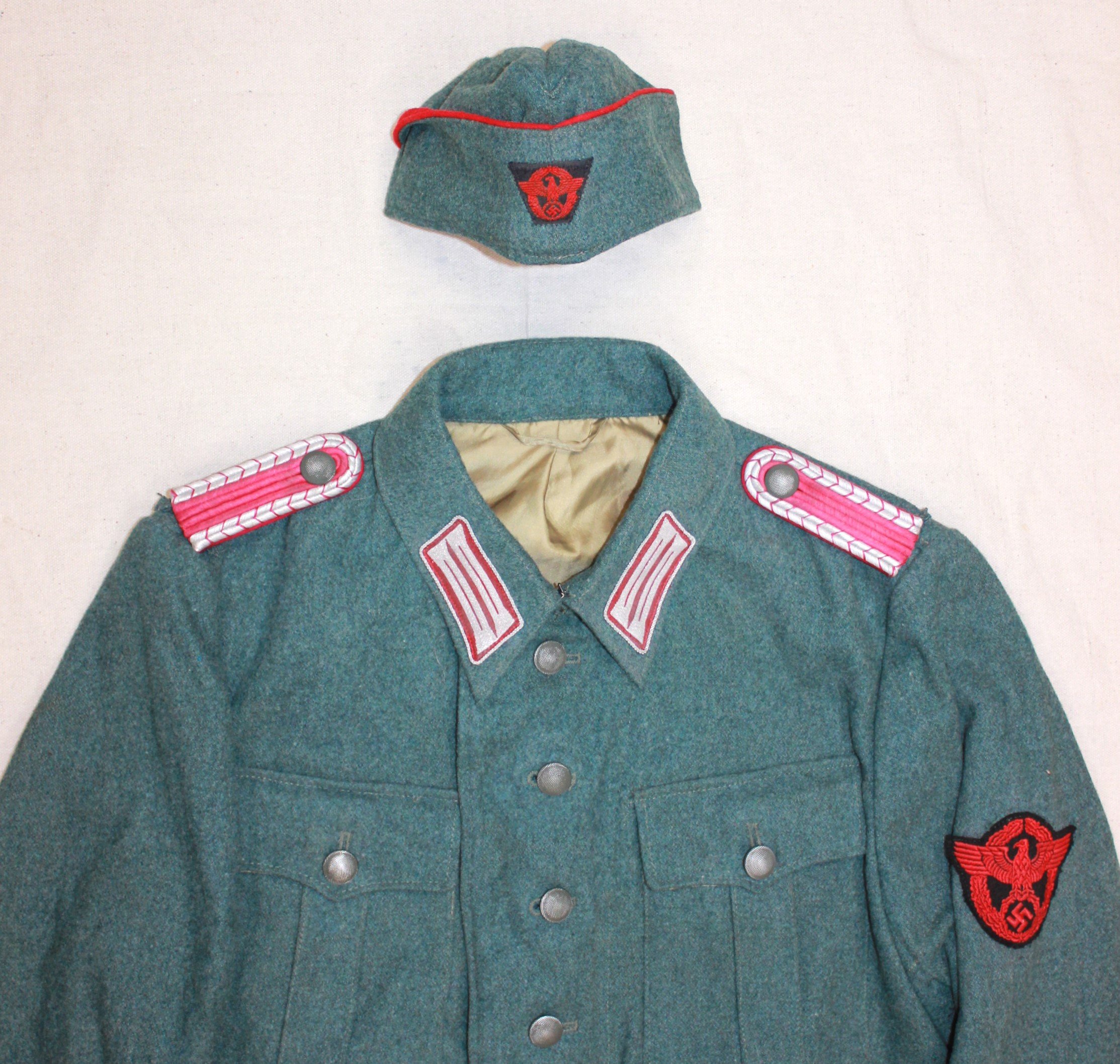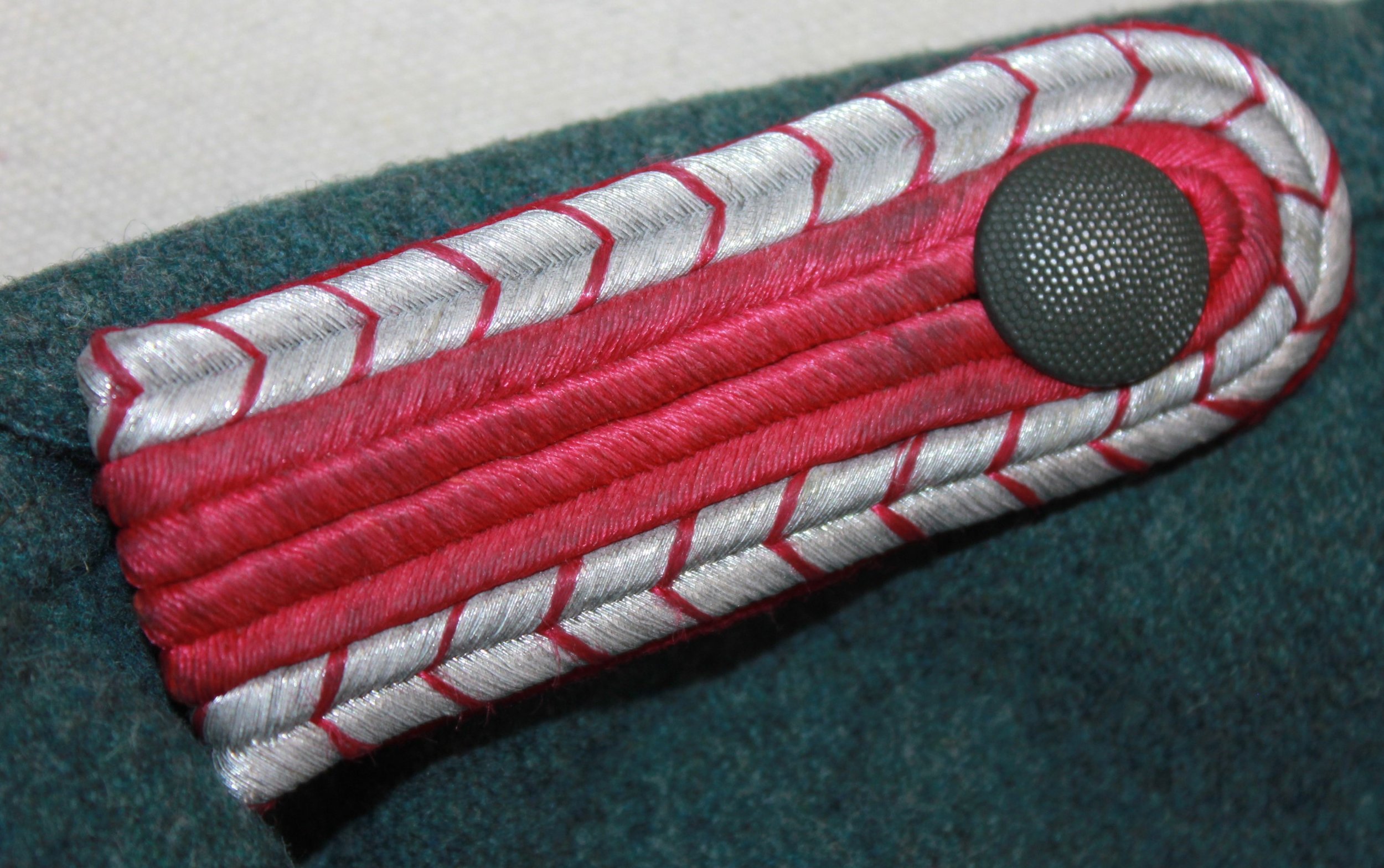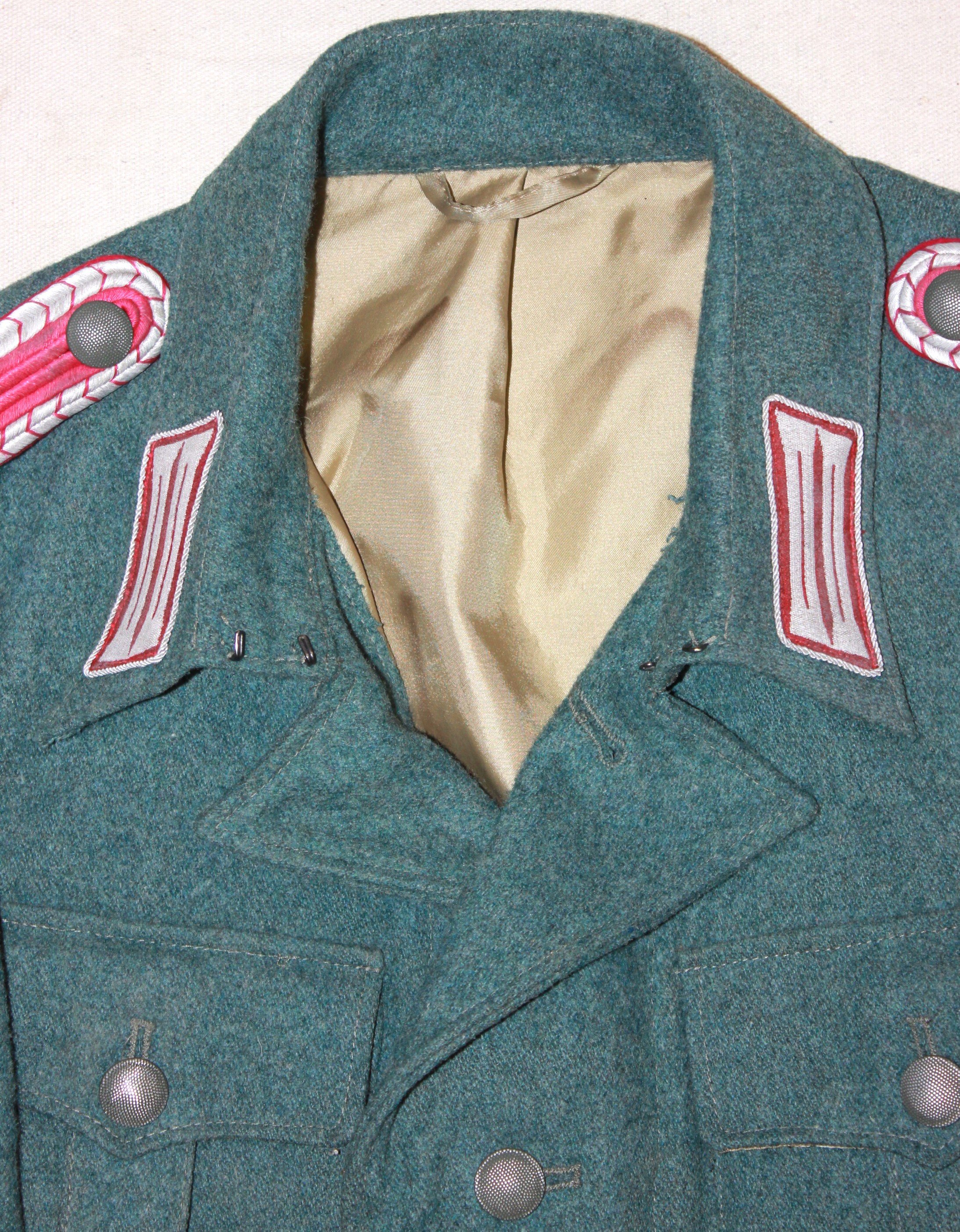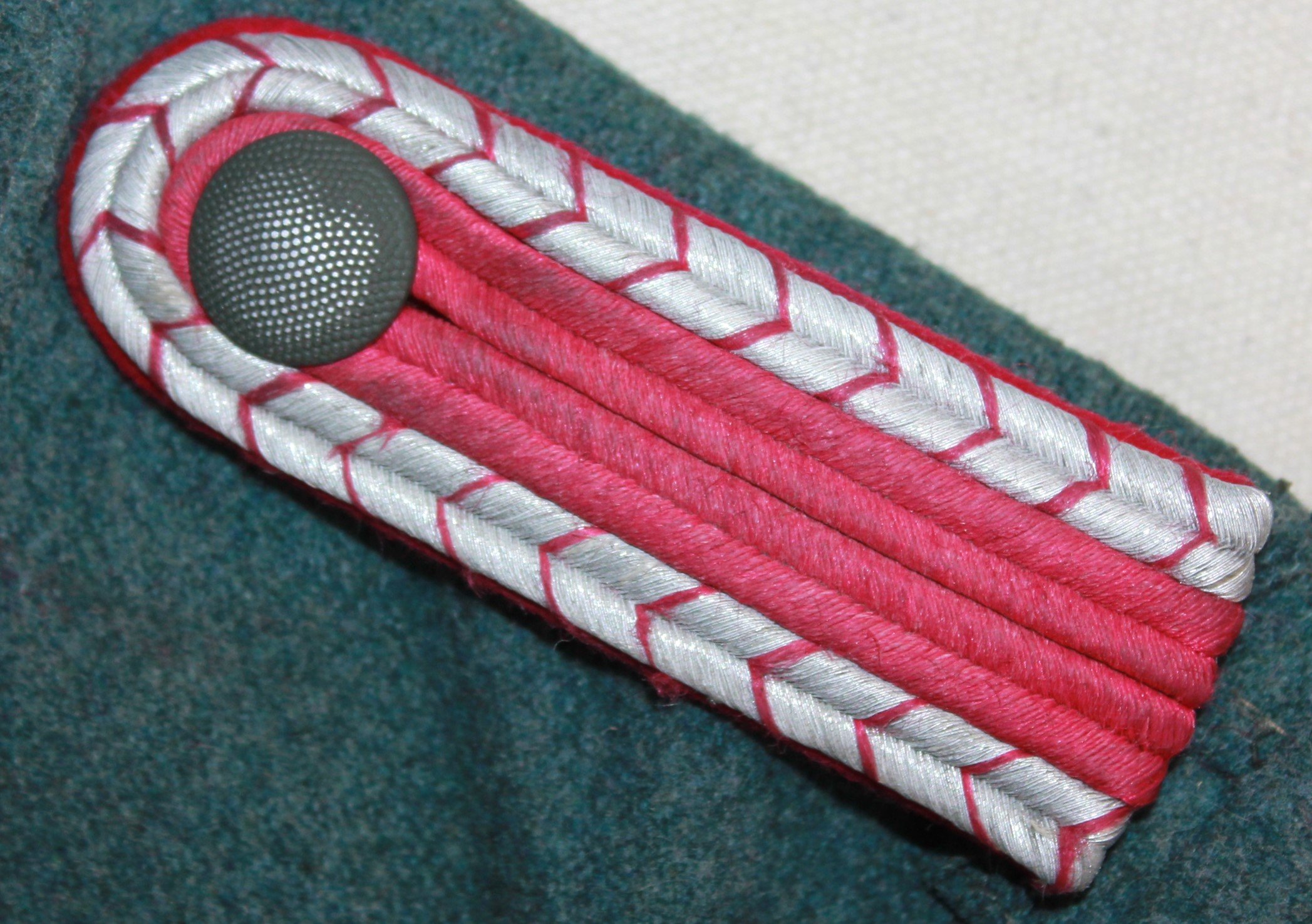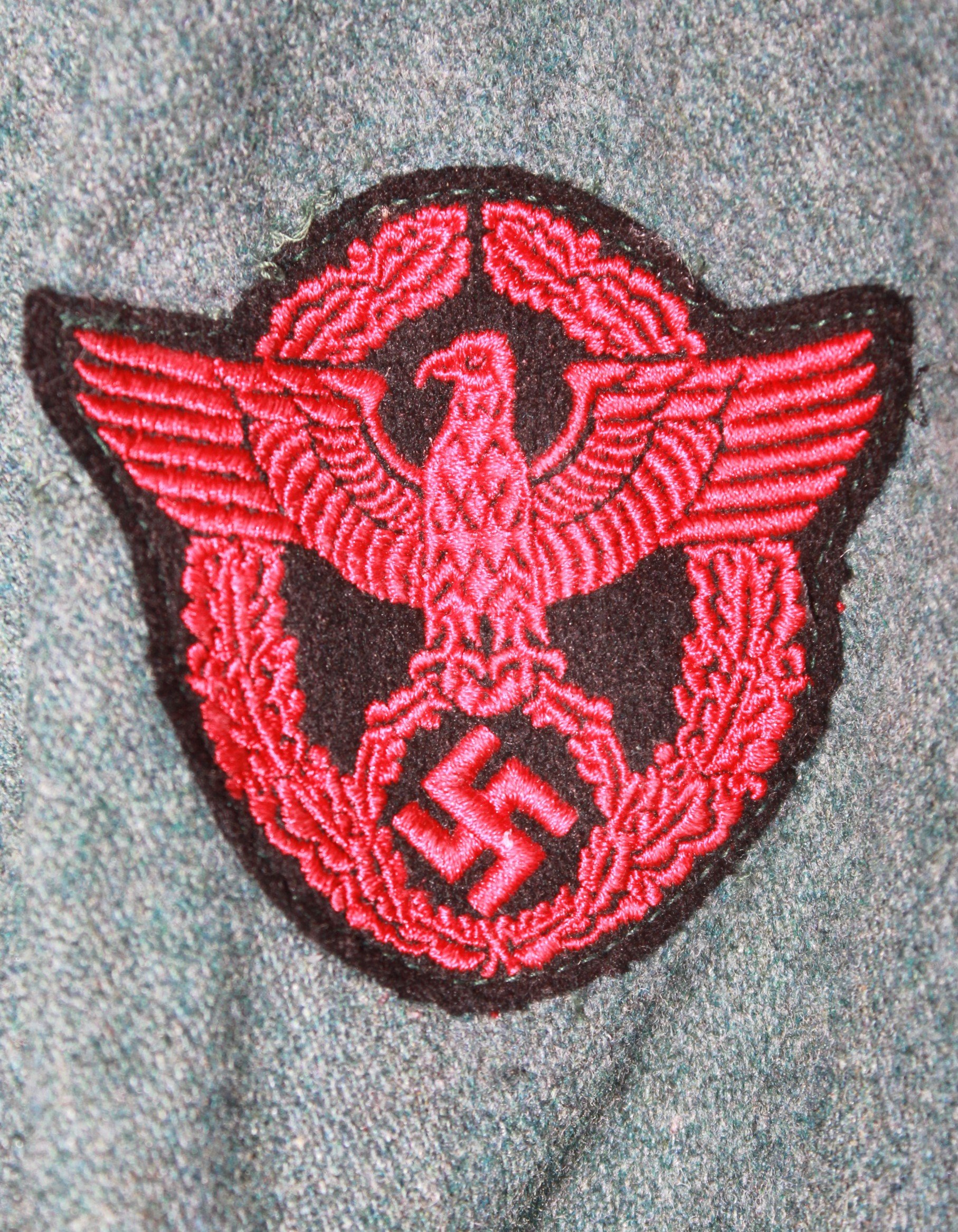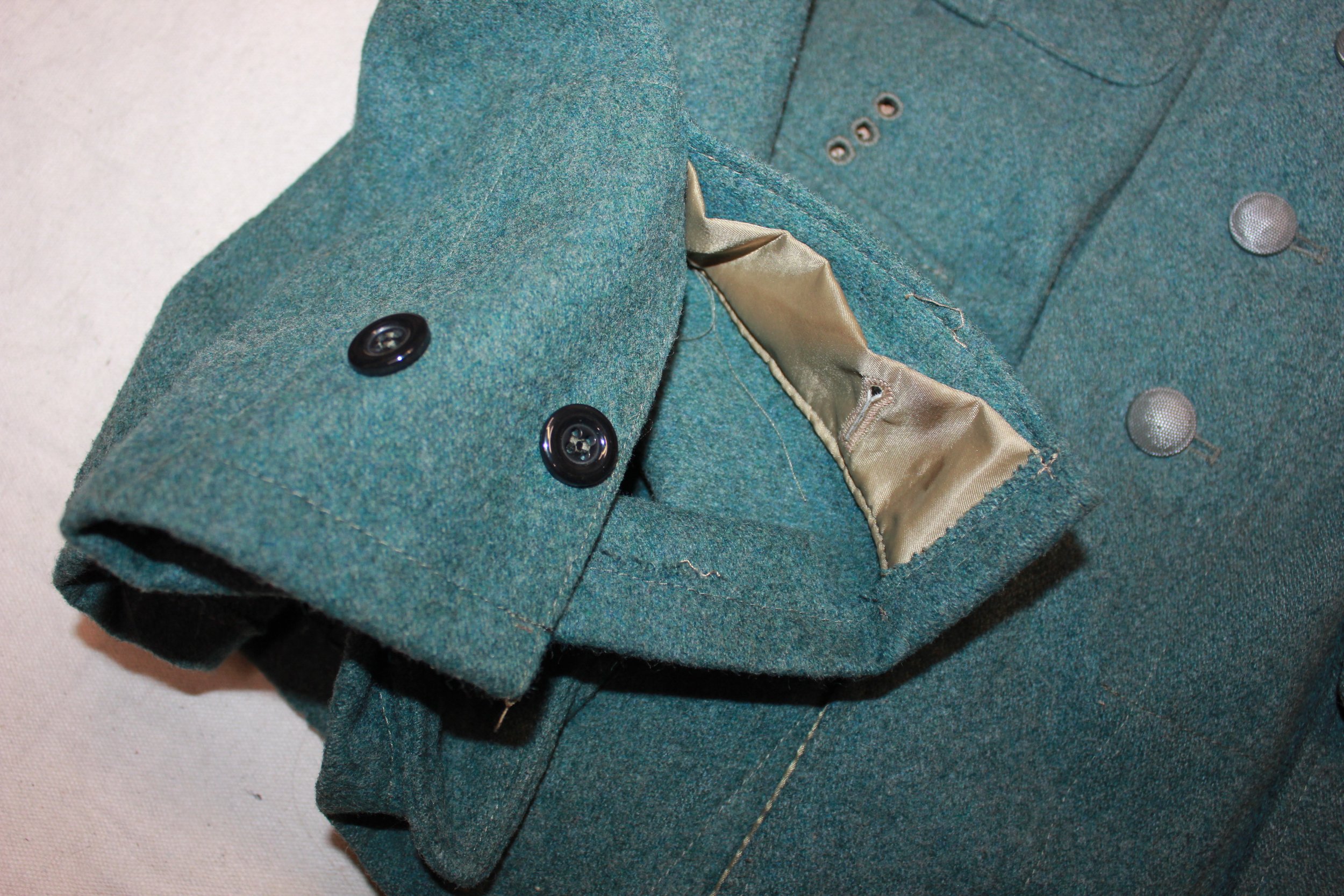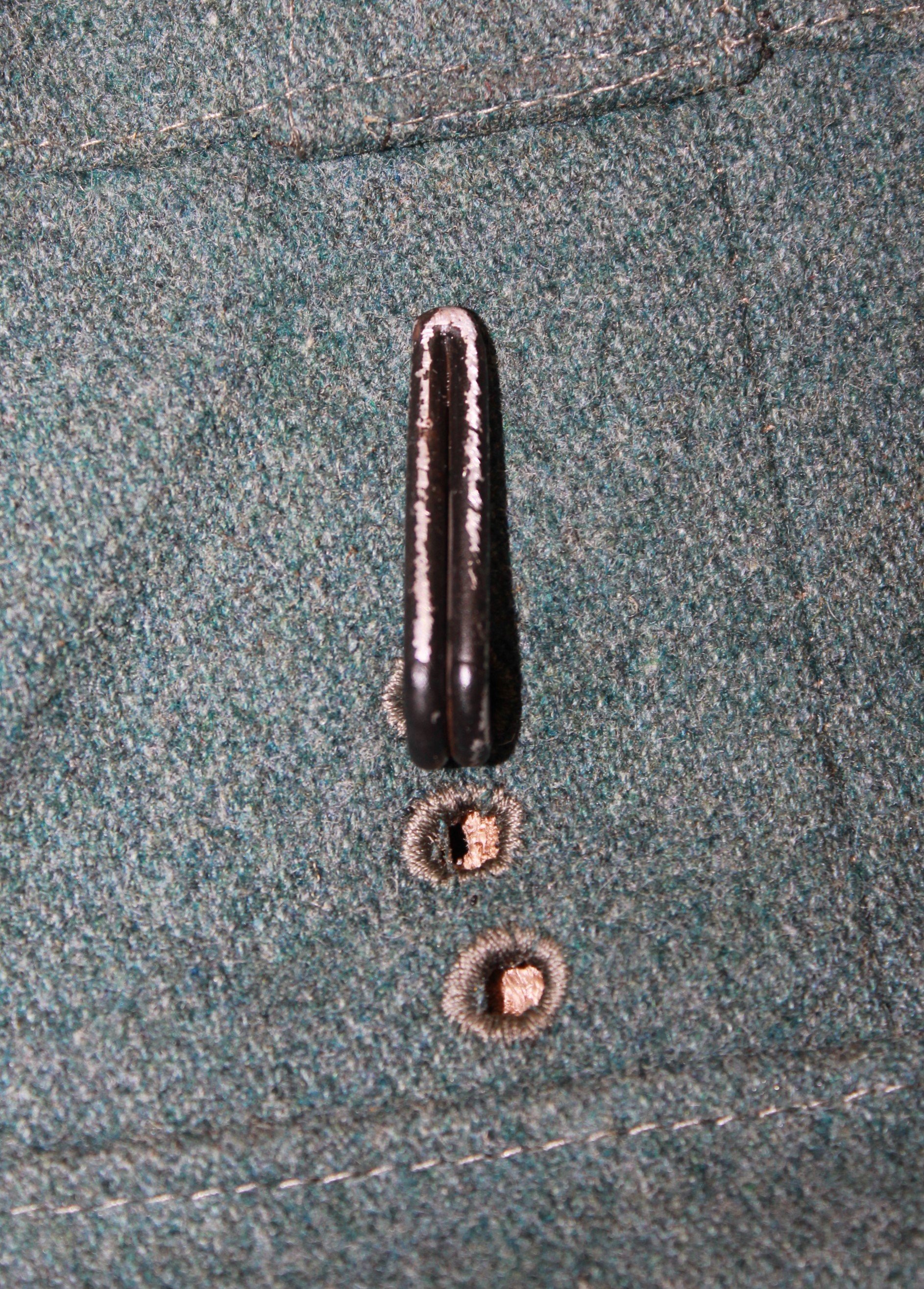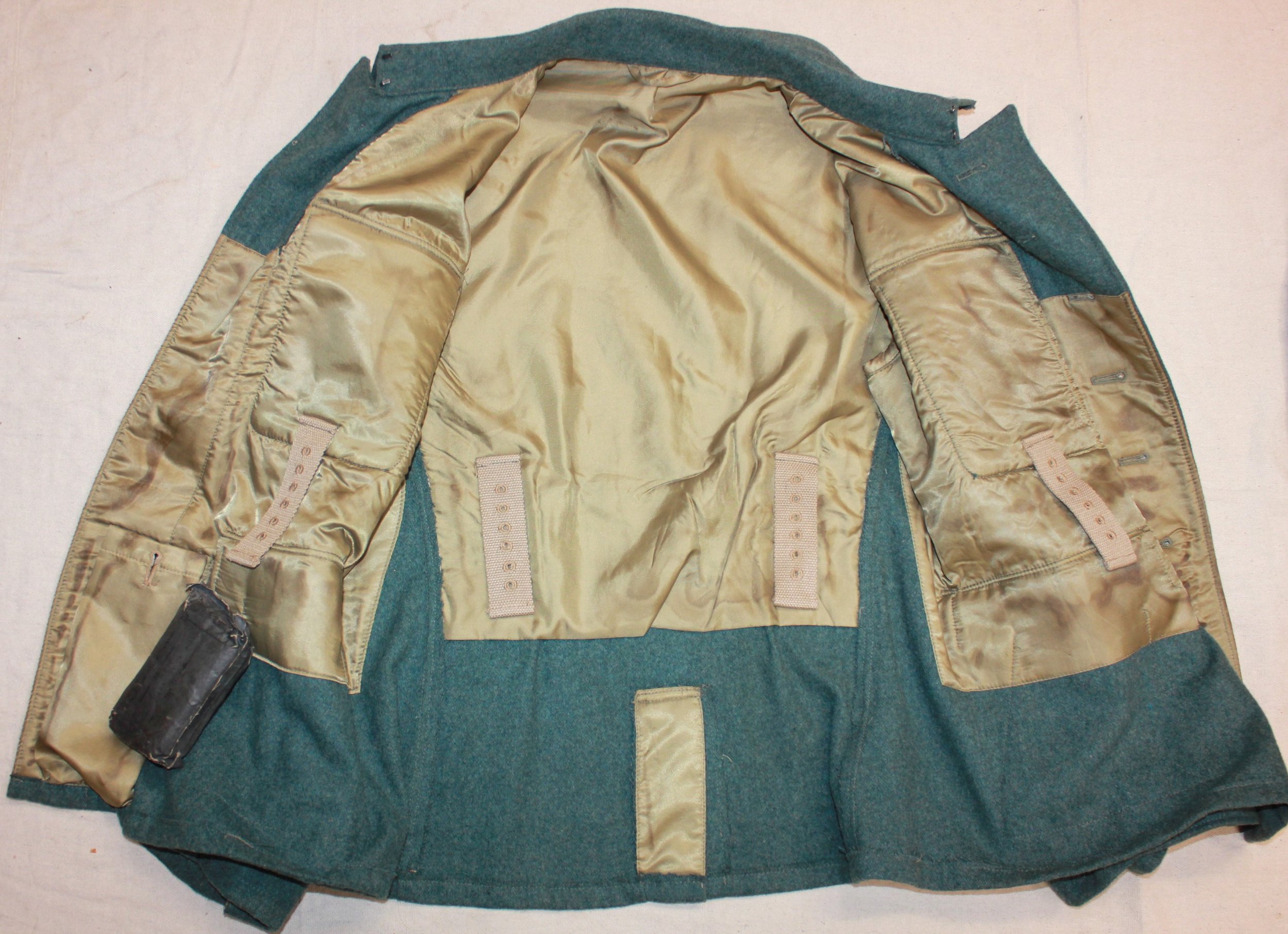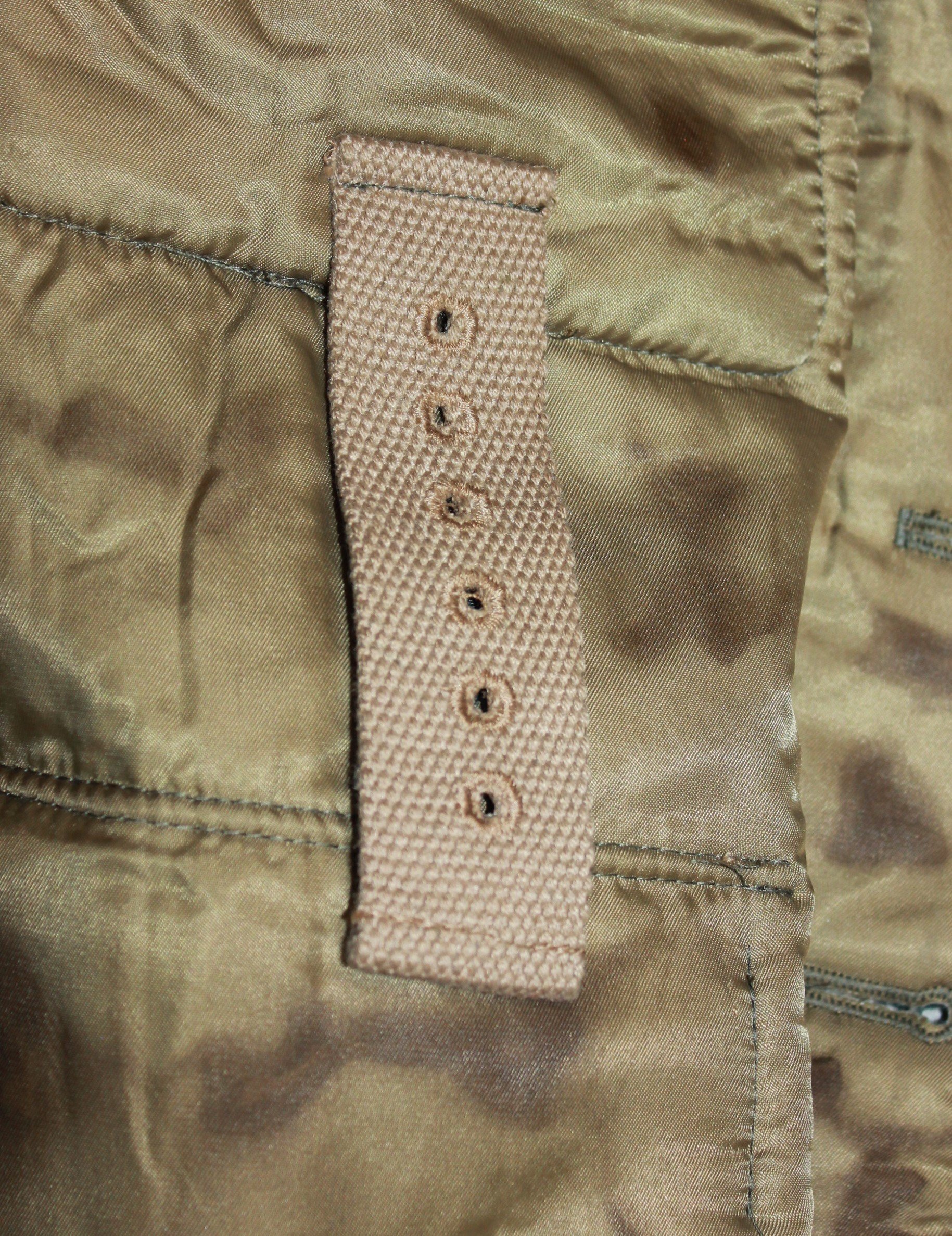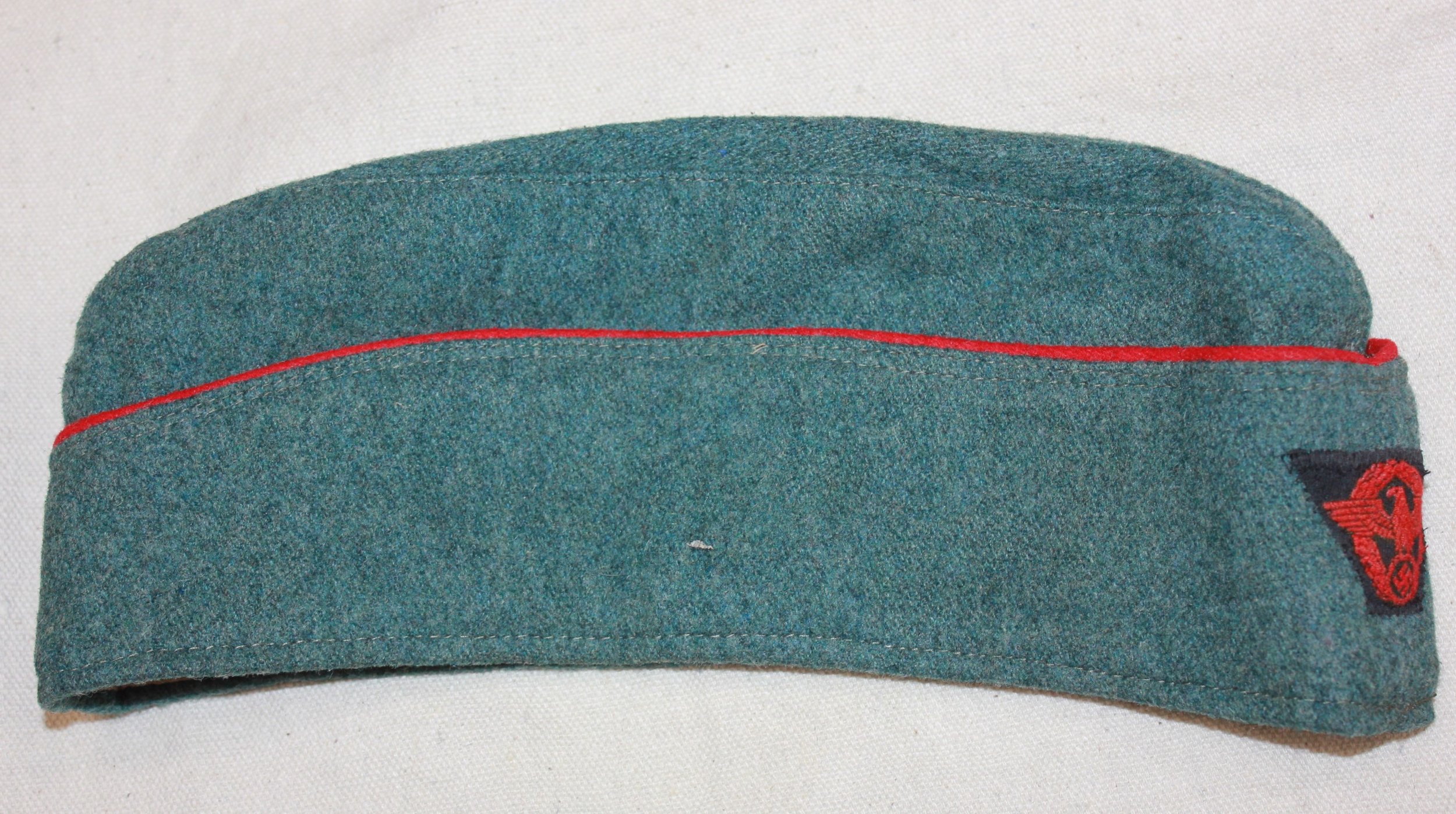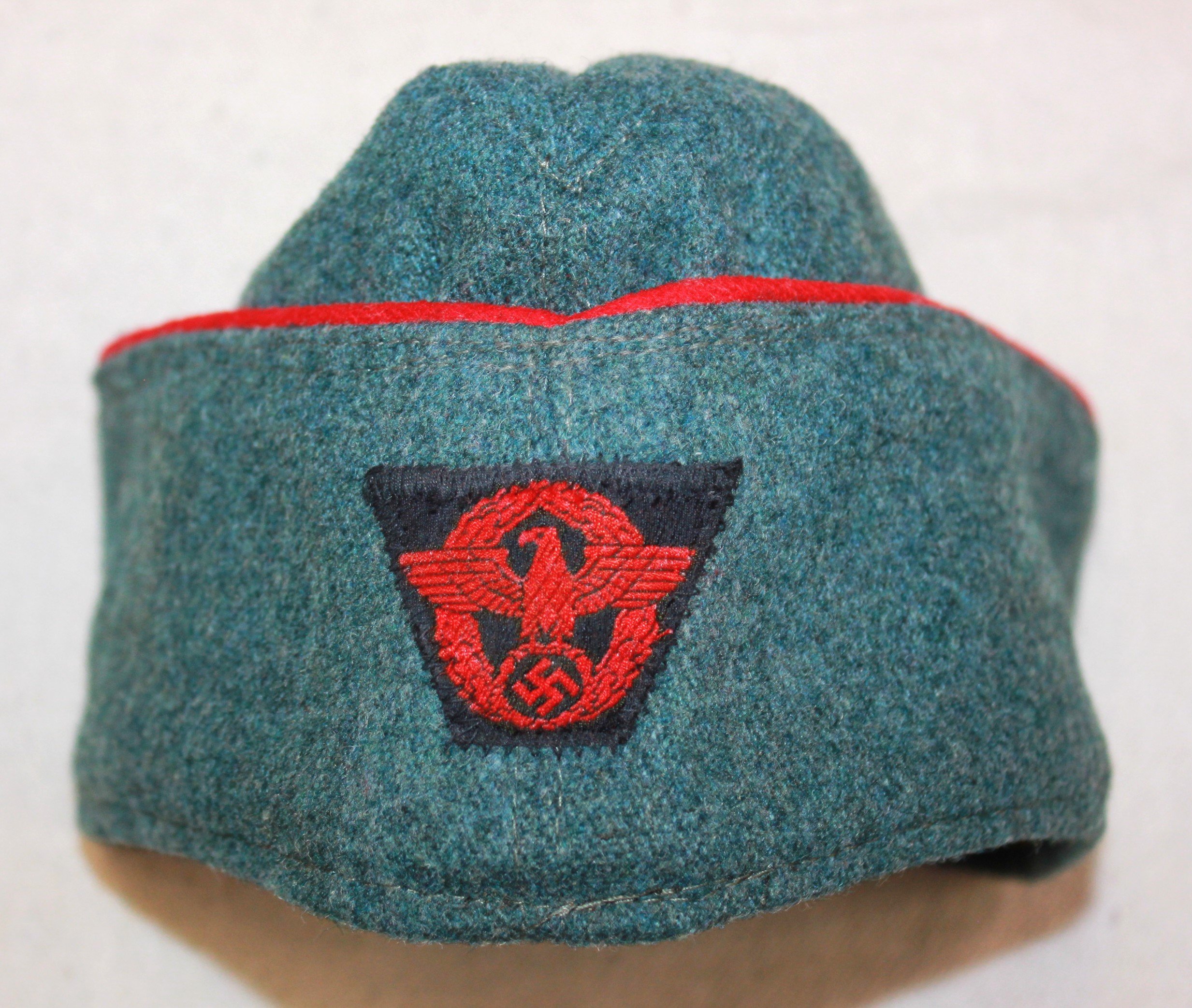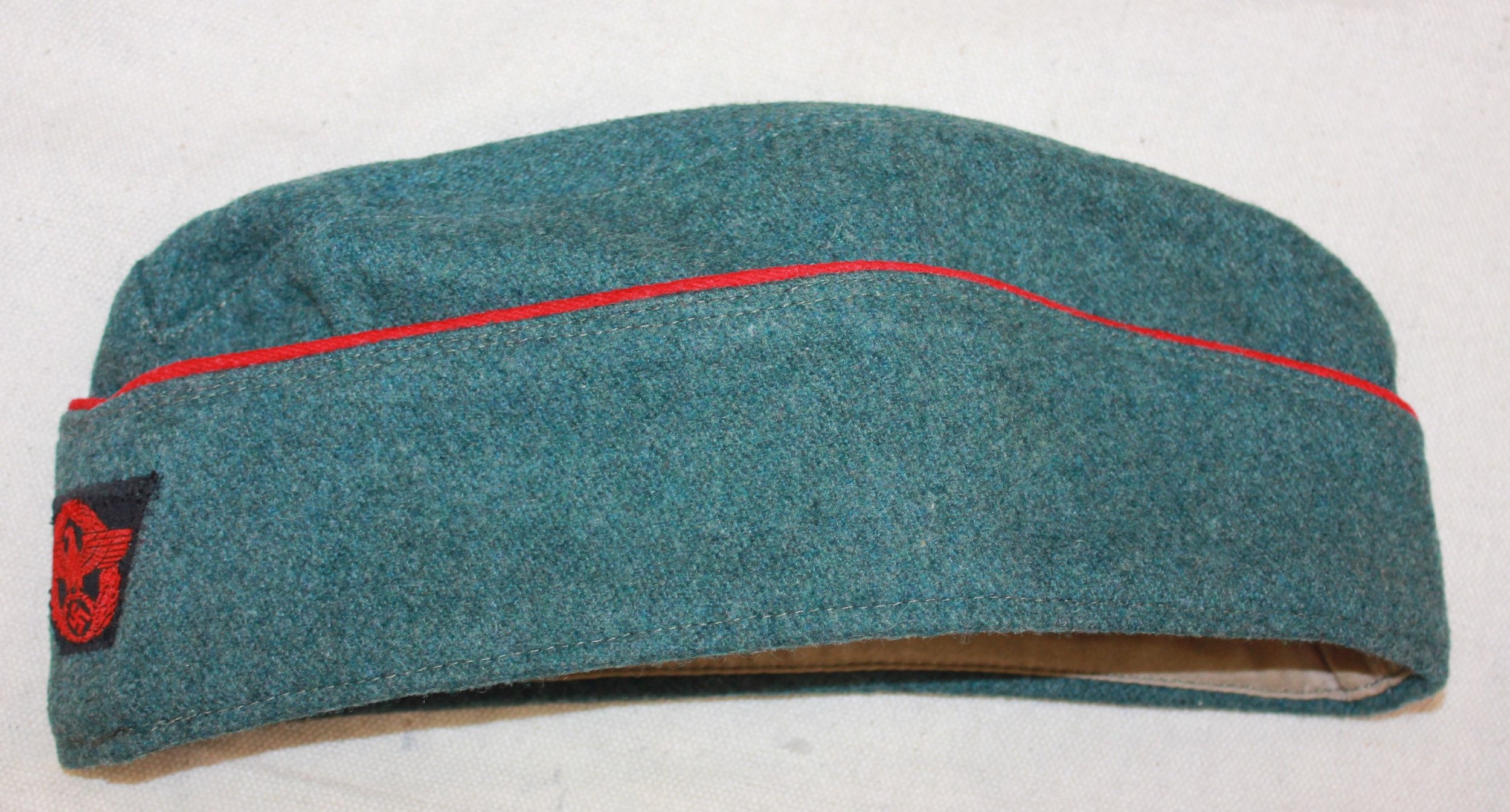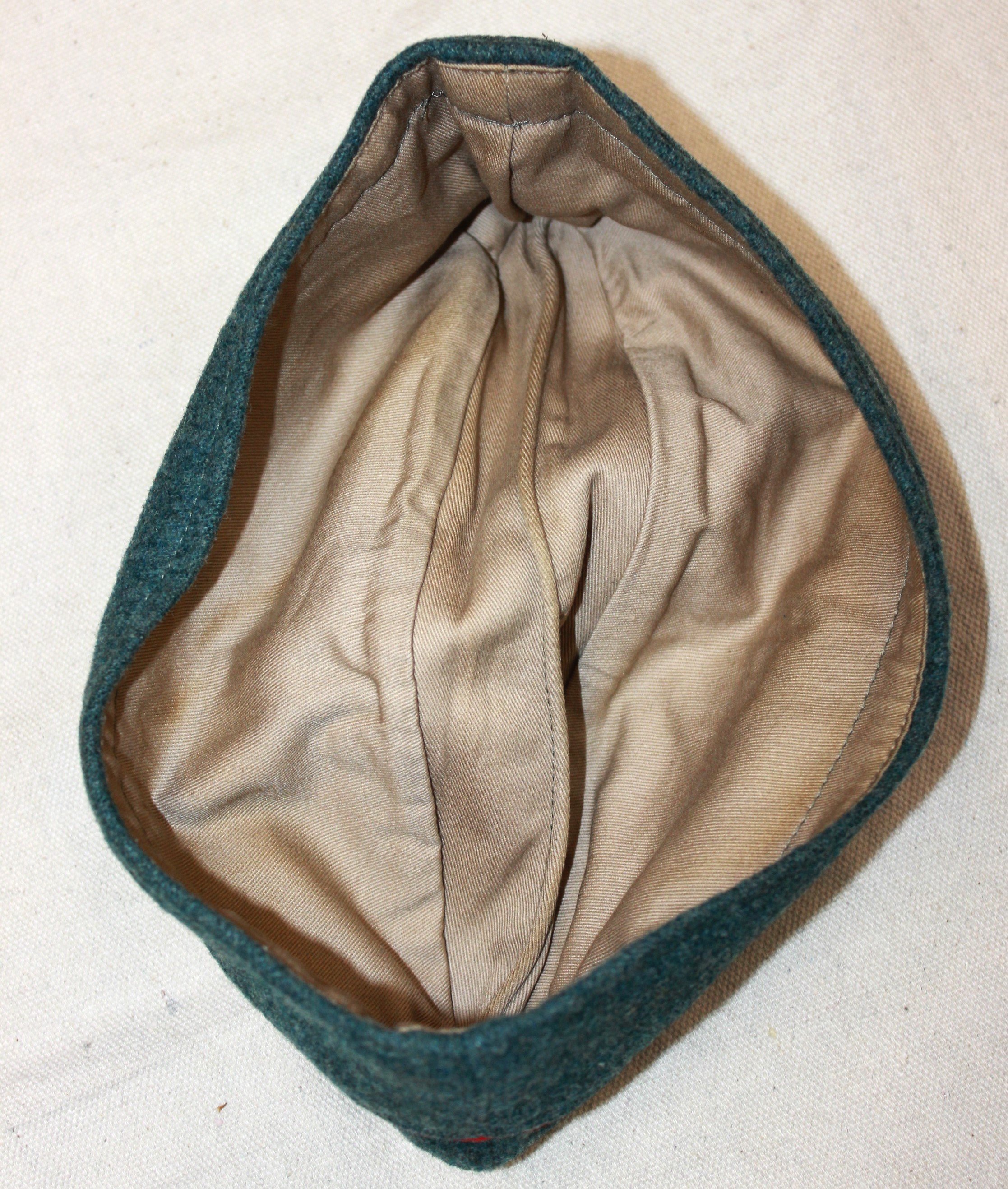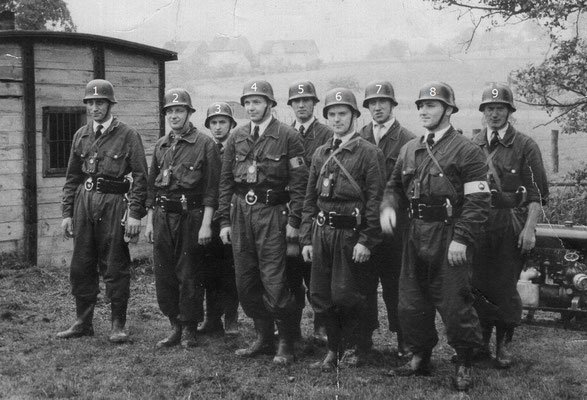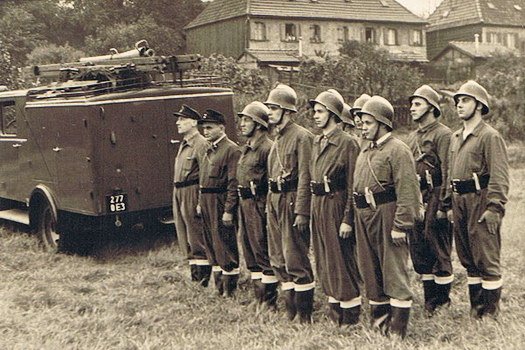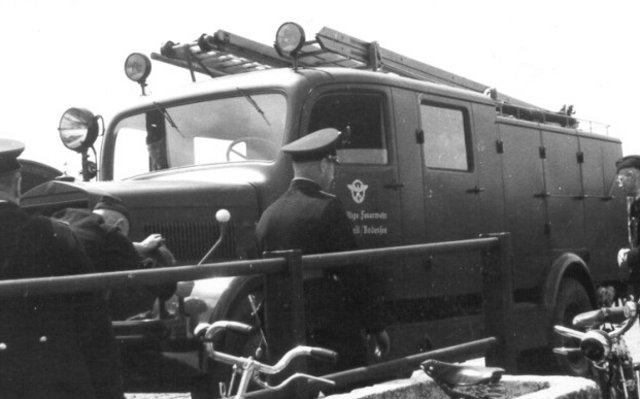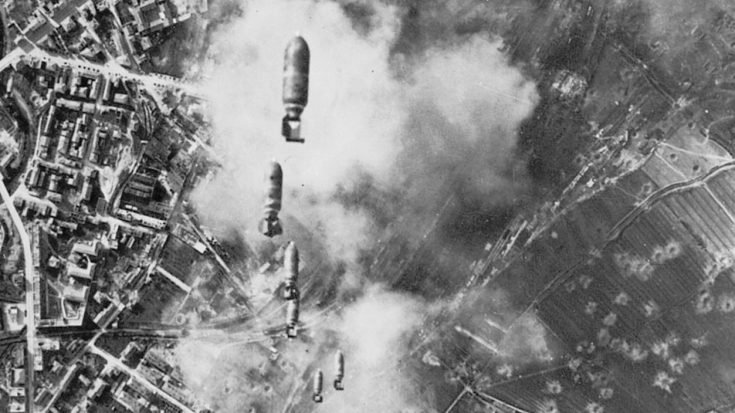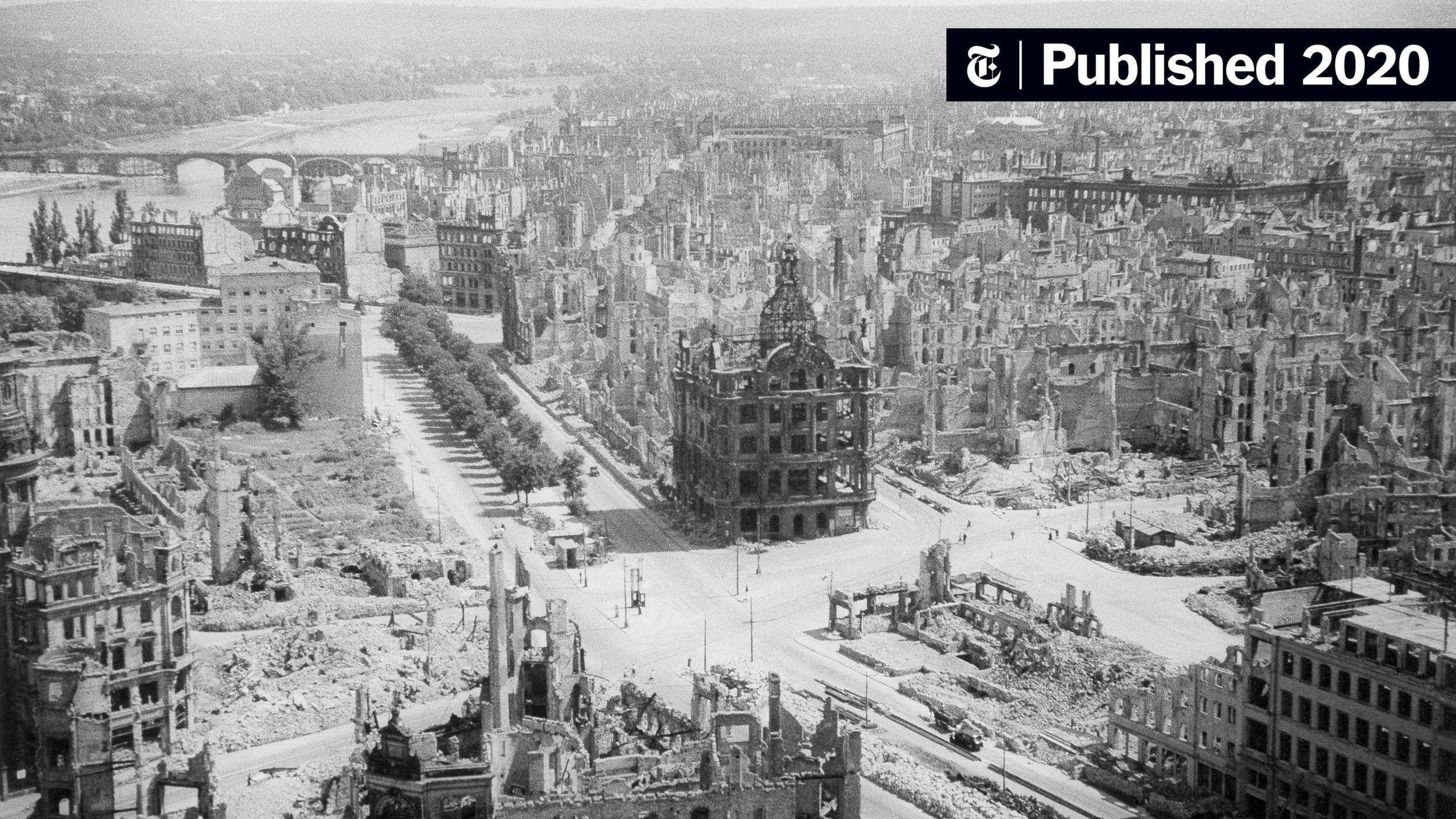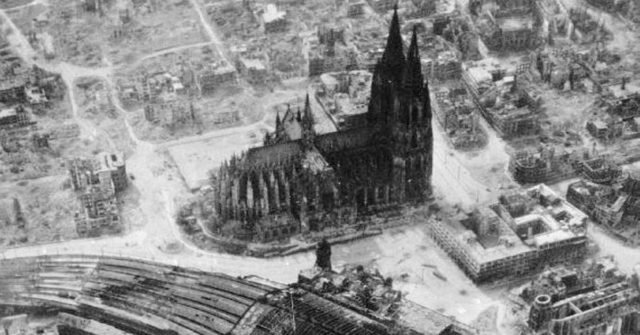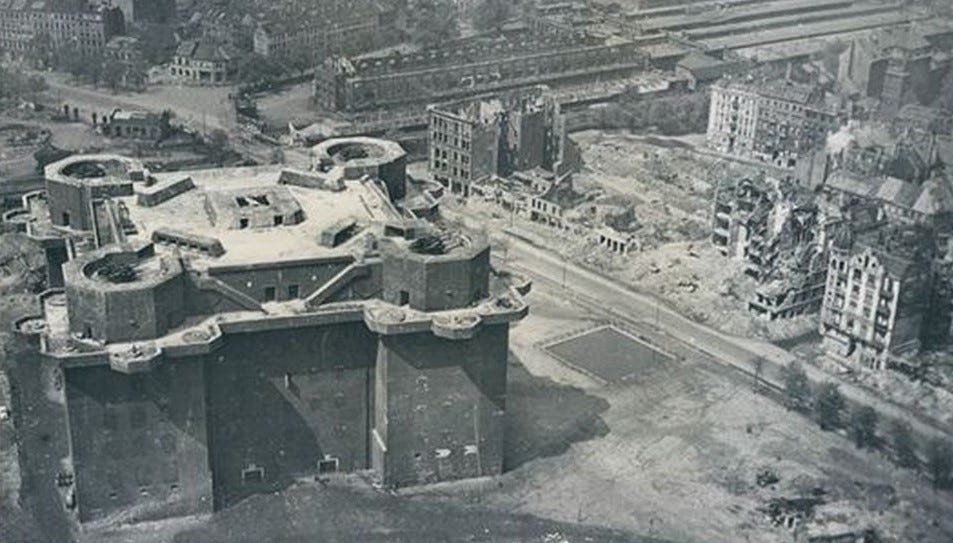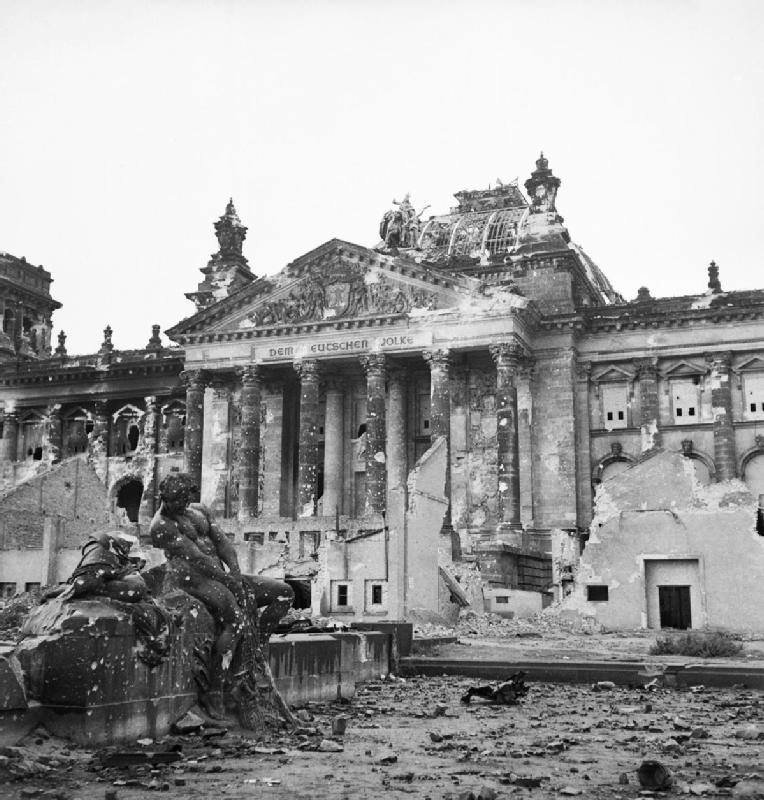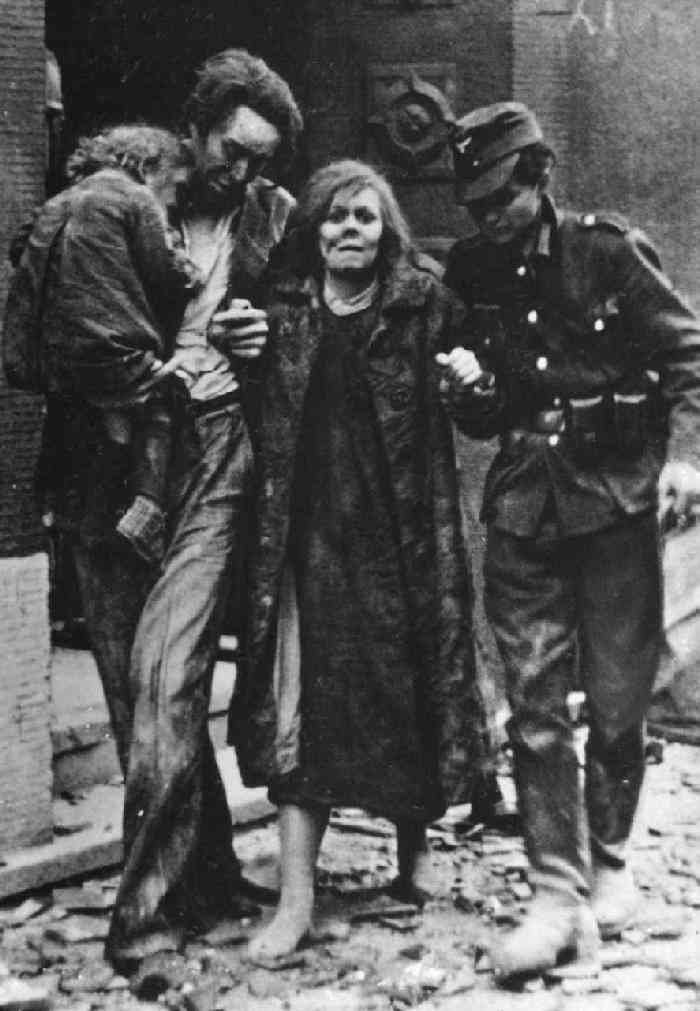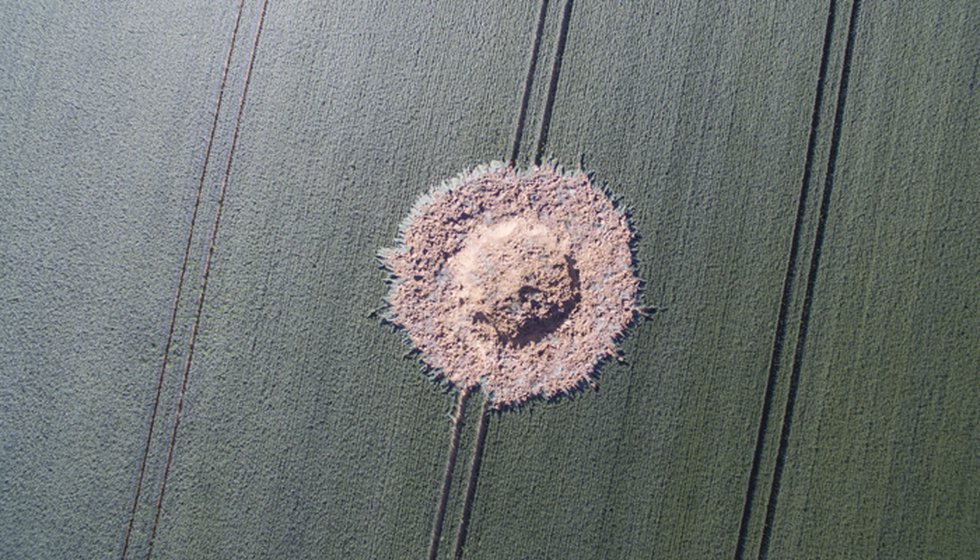Feuerschutz-polizei (Fireman):
Feuerschutzpolizei (Fireman) Work Uniform:
This is what you saw, Firemen such as this-holding hoses of buckets and trying to fight fires, of hand pumping from water from water-trailers, it just could not keep up, with the modern bombings, and artillery fire, it was simply overwhelming and devastating, but they fought on and tried to save lives, and it pretty much can be said about all city fireman of all nations, all cities that have them, of all time, even it if had it happened in America, it would be tough to have fought the fires.
The Black and Blue uniforms of the time were fancy and practical to some extent as well, The trimmings make them stand out from the dark uniform; it doesn’t show the burns and soot all over them either. There were special hard-backed helmets for them, which didn’t do much for your neck, but the helmets took the hit. They were made and converted from different models, with silver and black, and I have a couple somewhere.
This fellow is a “First War” Veteran and was probably in charge of a team of guys for the town.
*” UPDATED” Feuerschutzpolizei, Dress Uniform:
Although Prussia had incorporated its fire-fighting organizations into the police system in 1933, this amalgamation was only made universal throughout the Reich in 1938. Because of the necessity for air-raid protection, about ninety of the larger German cities were ordered to transfer their existing firefighting personnel to the newly created Fire Protection Police. The Feuerschutzpolizei was a branch of the Ordnungspolizei and, as such, came under the command of the same higher police authorities that controlled the latter.
The age limit for the Fire Protection Police was 60 years. The Officers had to have been graduates of the Fire Protection School at Eberswald. The smallest administrative area was the Wachtbezirk, composed usually of several ordinary Schutzpolizei Reviere (Wards). Operational areas for actual firefighting were determined independently, however, and Ausriickbereichr (Operational Zones) were drawn in conformity with tactical considerations. The usual operational unit called out in the first instance was known as a Zug, and the corresponding Feuerschutzpolizei Wache was known as a Zugwache (Watch Squad). In exceptional cases, a larger unit, the Gruppe, was called out, and the corresponding Wache was known as a Gruppenwache (Wach Group).
The Commander in charge of local units of the Feuerschutzpolizei was called Kommandeur or Leiter. He directed the firefighting and fire prevention, assigned the respective zones of operation to the subordinate units, and generally supervised the organization and operation of the Feuerschutzpolizei under his command. He was responsible for administrative purposes to the Oberbürgermeister of the Burgermeister.
The size of the Fire Protection Police was fixed following the population of the city, but in those cities with more than 870,000 inhabitants and those with harbor installations, numerous industrial or large areas that presented particular fire hazards, the number and nature of the Feuerschutzpolizei Wachen were determined in each case individually. In cities with more than 150,000, auxiliary fire-fighting units called Freiwillige Feuerwehren were established voluntarily to supplement the Feuerschutzpolizei. They were organized into tactical units called Gruppen. In exceptional cases, where the Freiwillige Feuerwehr was inadequate, an obligatory fire service, the Pflichtfeuerwehr, was established.
Both the Fire Protection Police (Feuerschutzpolizei) and the Volunteer Fire Defense Service (Freiwillige Feuerwehr) wore identical blue-black (Prussian Blue)uniforms with black facings and carmine pink piping and insignia. Only the collar patches were different, and the ‘inner’ color of the shoulder straps may be different to distinguish between the two different formations. Upon absorption into the Order Police, the Fire Protection Police wore the ‘Police Arm Eagle’ in Pink (Carmine) often with the city’s name over it, on the upper left arm of their tunics, overalls, and greatcoats. From 1938, the Fire Protection Police began to be issued uniforms of Police Green, piped in crimson. The Prussian Blue-Fire Police uniforms continued in use throughout the War up to its capitulation, and then after too.
The Fire Police Helmet was produced both with and without a polished metal comb on it. They had a detachable leather flap that hung below the black edges.
This Feuerschutzpolizei served in Prussia, noted by the Prussian War Effort Cross he wears next to the service ribbon. With this uniform, he wears crimson piped trousers, service cap, or overseas cap of the special helmet, along with the police belt, buckle, and, being a policeman as well as a fireman, a sidearm in a holster.
NOTE: *This uniform had a “Re-evaluation” and now has the correct appearance, originally The collar and cuffs were dark green, but it was pointed out that black was the color, so, I had it updated to the black collar and cuffs, but it is correct, The Cap was also shelved, and a new black-banded NCO-Schirrmutz made.
“Updated” Oberwachtmeister, Feurshutzpolizei Regiment ,,Hessen”:
In June 1936, Reichsführer-SS Heinrich Himmler was appointed to the newly created position of Chef der Deutschen Polizei im Reichsministerium des Innern or Chief of the German Police in the National Ministry of the Interior, effectively giving him full control of all police agencies within Germany. As a result of this appointment and the restructuring of all the separate German state police into a single national police force.
This included the Feuerschutzpolizei or Fire Protection Police. This brought about a change in uniform from dark blue to Polizei Grün, retaining the Carmine Rot Waffenfarbe. Regulations established in November 1941 removed the Stadt or city name from the sleeve insignia, rendering all police sleeve eagle uniforms in design. The Oberwachtmeister had been recruited from his local area and assigned to a regiment that encompassed service in his state, in this case, Hessen.
